Creating an Asian-inspired living room brings a sense of tranquility and balance into the home. This design philosophy, rooted in Zen principles, emphasizes simplicity, natural elements, and a clutter-free environment to foster peace and mindfulness. By focusing on clean lines, organic materials, and a harmonious color palette, you can transform your living space into a serene retreat. The key is to blend functionality with understated elegance, creating a room that feels both sophisticated and calming. This approach moves beyond mere aesthetics, aiming to cultivate a space that nurtures the mind, body, and spirit.
1. Shoji Screen Room Dividers
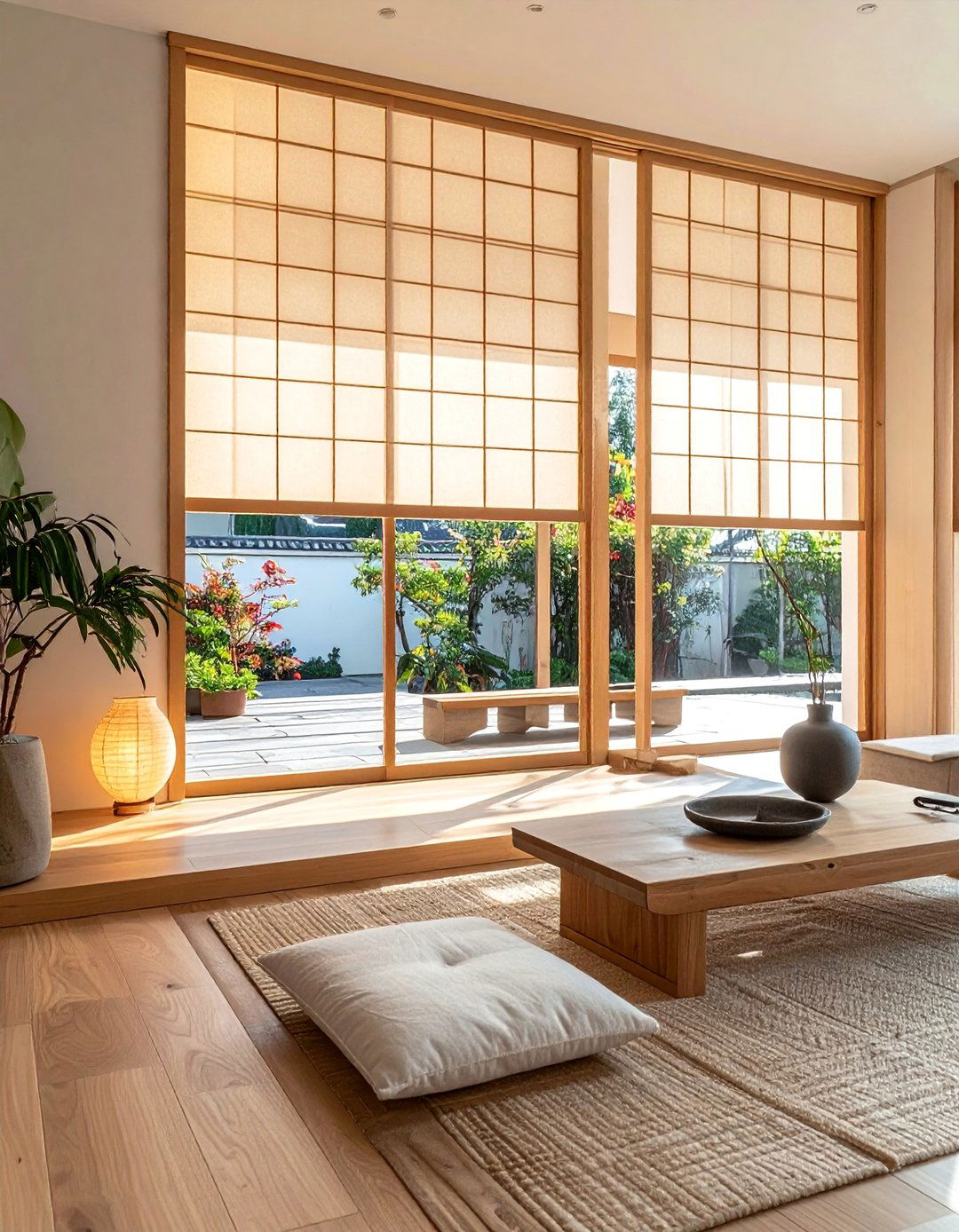
Incorporating shoji screens as room dividers is a classic way to introduce Asian design into your living room. These traditional Japanese screens, made from translucent washi paper set in a wooden lattice frame, diffuse light beautifully, creating a soft, ambient glow. They serve a practical purpose by partitioning a larger space without completely closing it off, maintaining an open and airy feel. This element not only adds architectural interest but also enhances the room's Zen-like atmosphere by promoting a sense of lightness and simplicity. Their minimalist design complements a variety of decor styles while providing flexible functionality.
2. Low-Profile Platform Seating
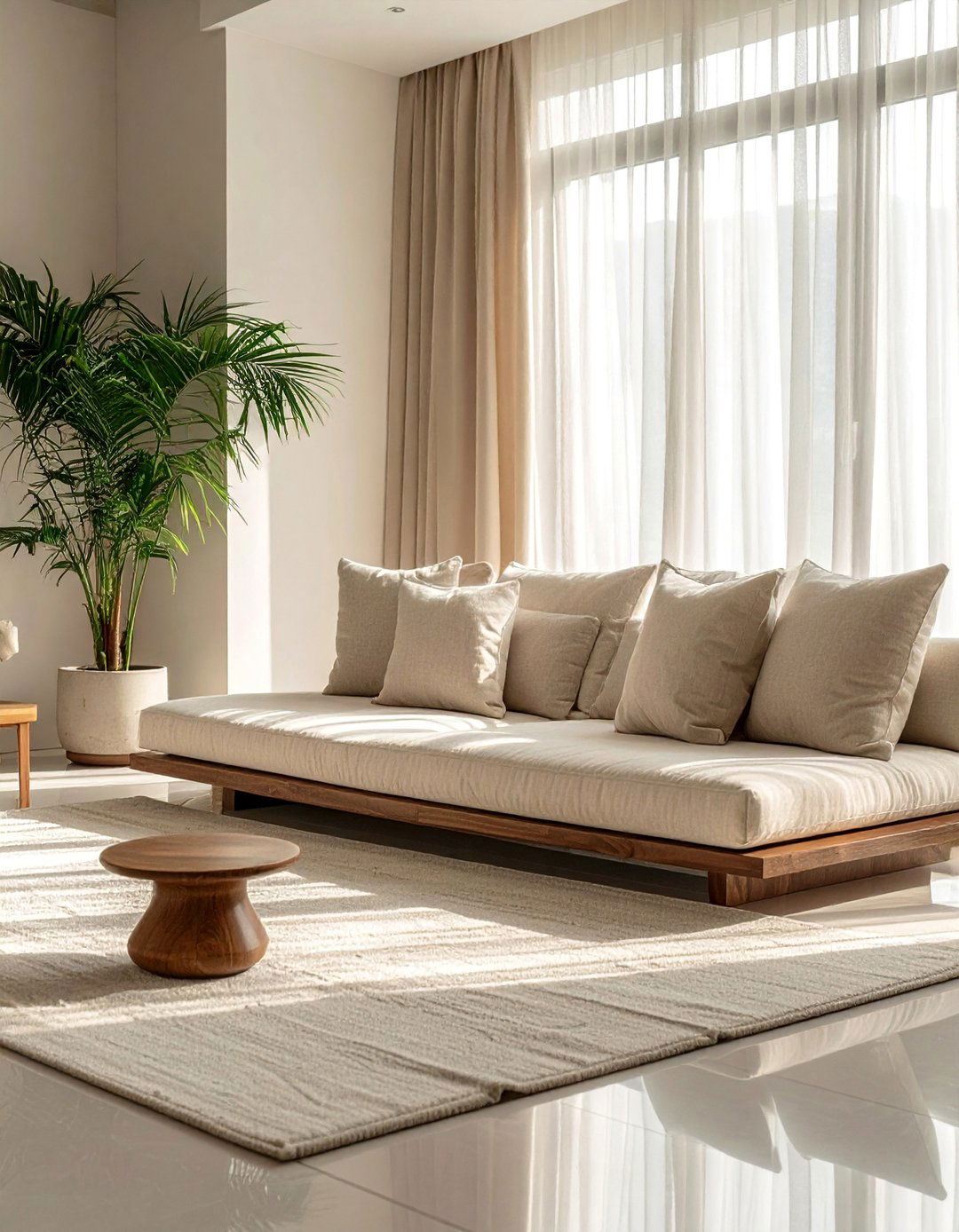
One of the most defining features of an Asian-inspired living room is the use of low-profile platform seating. This style of furniture, which sits closer to the ground, fosters a more intimate and grounded atmosphere. Platform sofas and floor cushions encourage a relaxed, informal posture, aligning with the Zen concept of being connected to the earth. Upholstered in neutral fabrics like linen or cotton, these pieces emphasize comfort and simplicity. This seating arrangement minimizes visual clutter, making the room appear more spacious and open, which is essential for creating a serene and uncluttered sanctuary for relaxation and contemplation.
3. Natural Bamboo Flooring
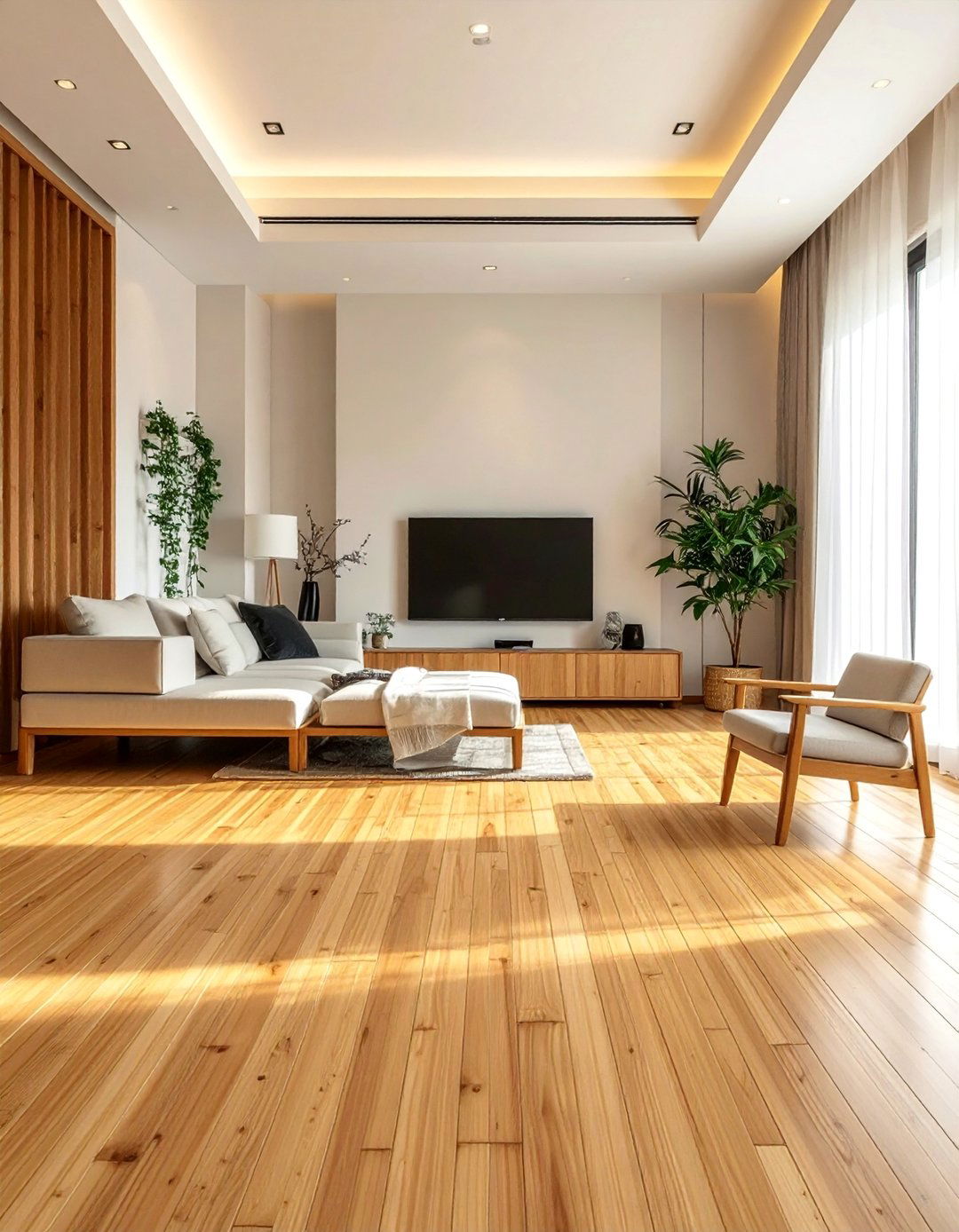
Choosing natural bamboo flooring provides an authentic and sustainable foundation for an Asian-inspired living room. Bamboo is a durable and eco-friendly material that brings an immediate sense of warmth and nature indoors. Its light color and subtle grain patterns create a clean, minimalist aesthetic that serves as a perfect neutral backdrop for other design elements. This type of flooring is not only visually appealing but also practical, being easy to clean and maintain. By using bamboo, you anchor the space in organic texture, reinforcing the Zen principle of harmony with the natural world and establishing a peaceful, uncluttered base for the room.
4. Minimalist Stone Accent Wall
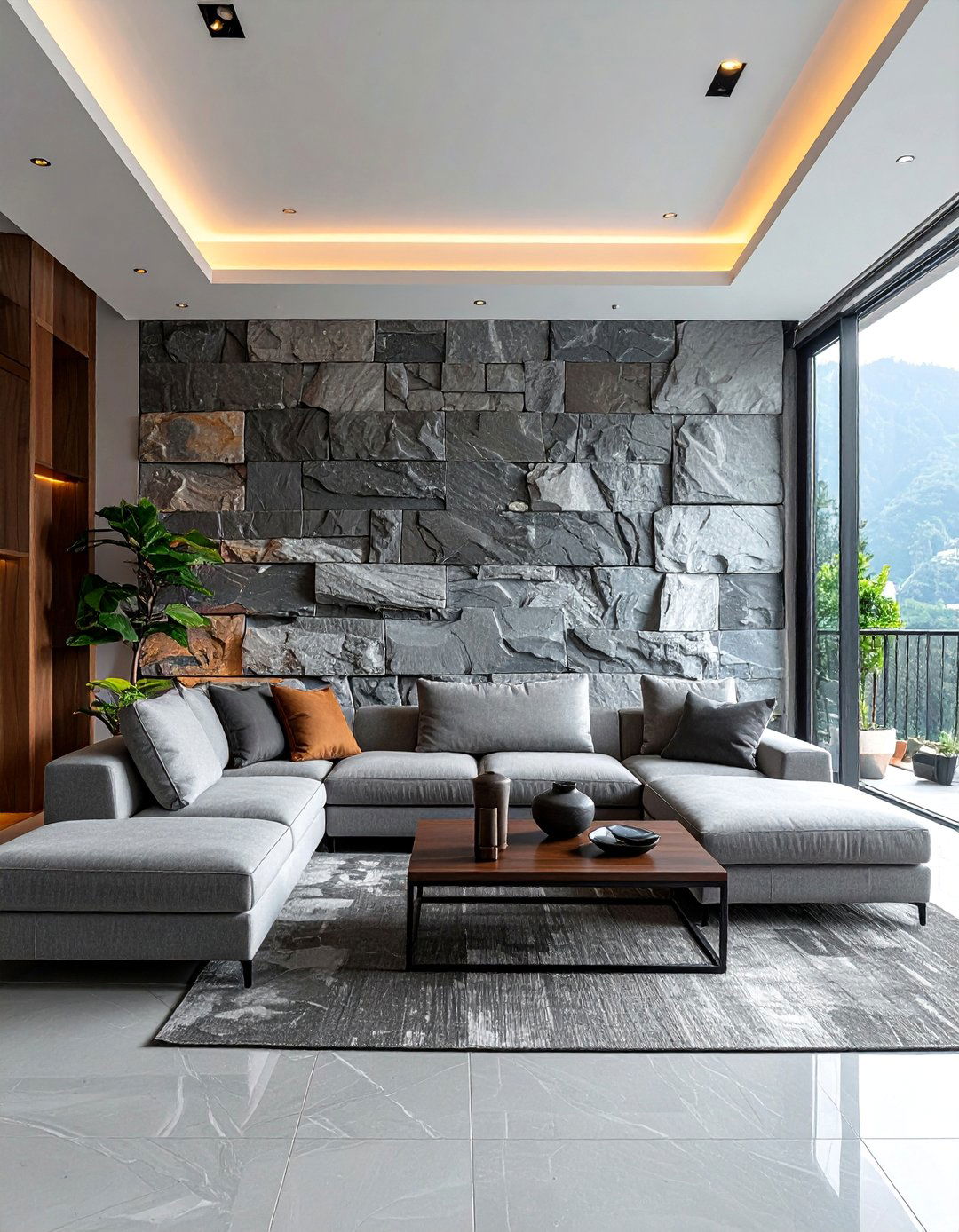
A minimalist stone accent wall can serve as a powerful focal point in a Zen-inspired living room. Utilizing materials like slate, river rocks, or stacked stone introduces a raw, earthy texture that contrasts beautifully with smoother surfaces. This feature brings the grounding energy of the outdoors inside, evoking the tranquility of a Zen garden. The natural variations in the stone's color and texture add depth and visual interest without overwhelming the space. By keeping the rest of the decor simple and understated, the stone wall becomes a statement piece that embodies strength, stability, and a deep connection to nature.
5. Integrated Tatami Mat Area
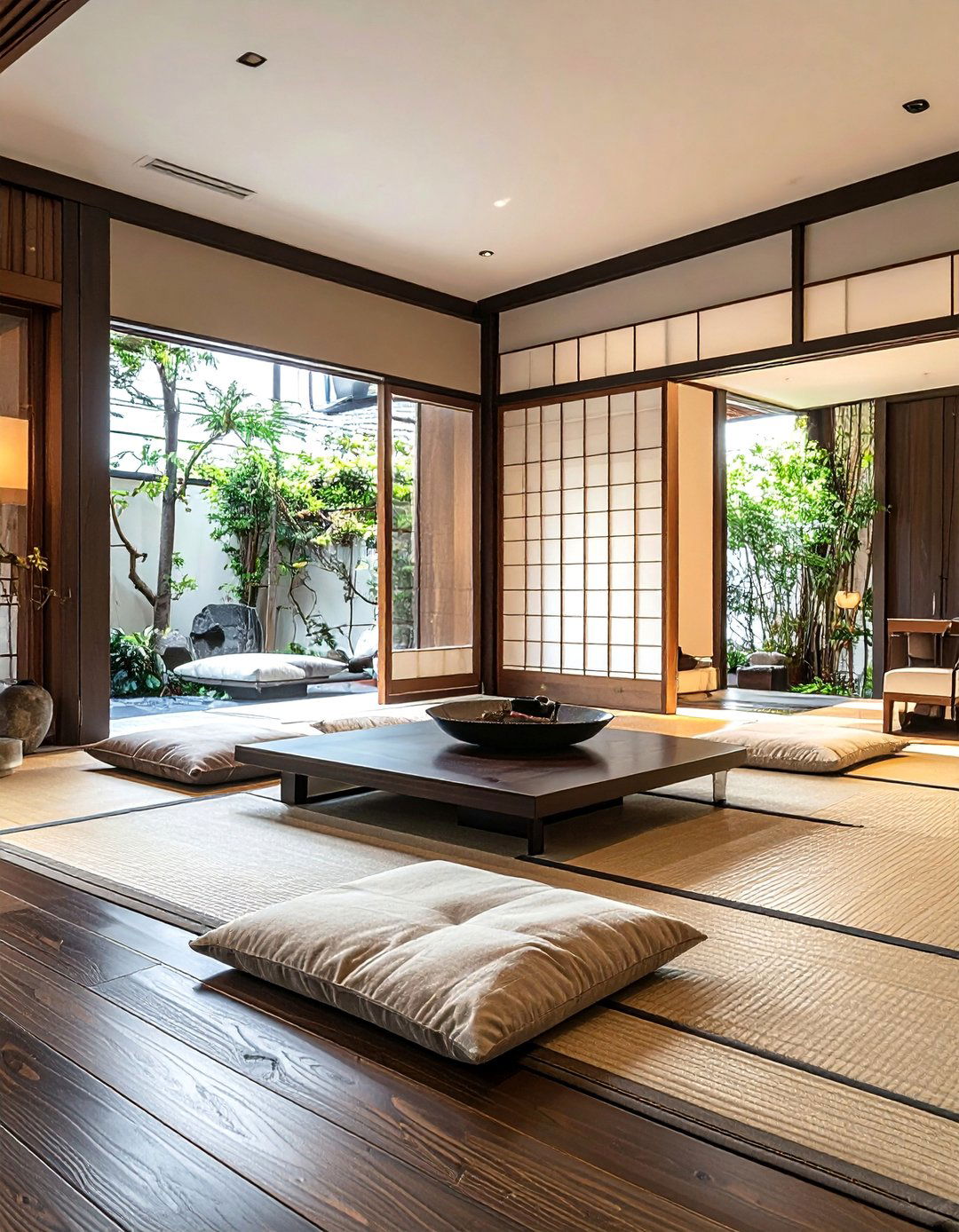
Integrating a dedicated tatami mat area brings a traditional Japanese element directly into your living room. Tatami mats, made from woven rush grass, offer a firm yet comfortable surface ideal for tea ceremonies, meditation, or simply relaxing on the floor. Their distinct texture and natural aroma contribute to a multisensory Zen experience. Defining a specific zone with tatami mats creates a versatile space within the larger room, promoting a minimalist lifestyle. This feature encourages a closer connection to the floor, fostering a sense of grounding and simplicity that is central to Asian interior design philosophies.
6. Bonsai Tree as a Centerpiece
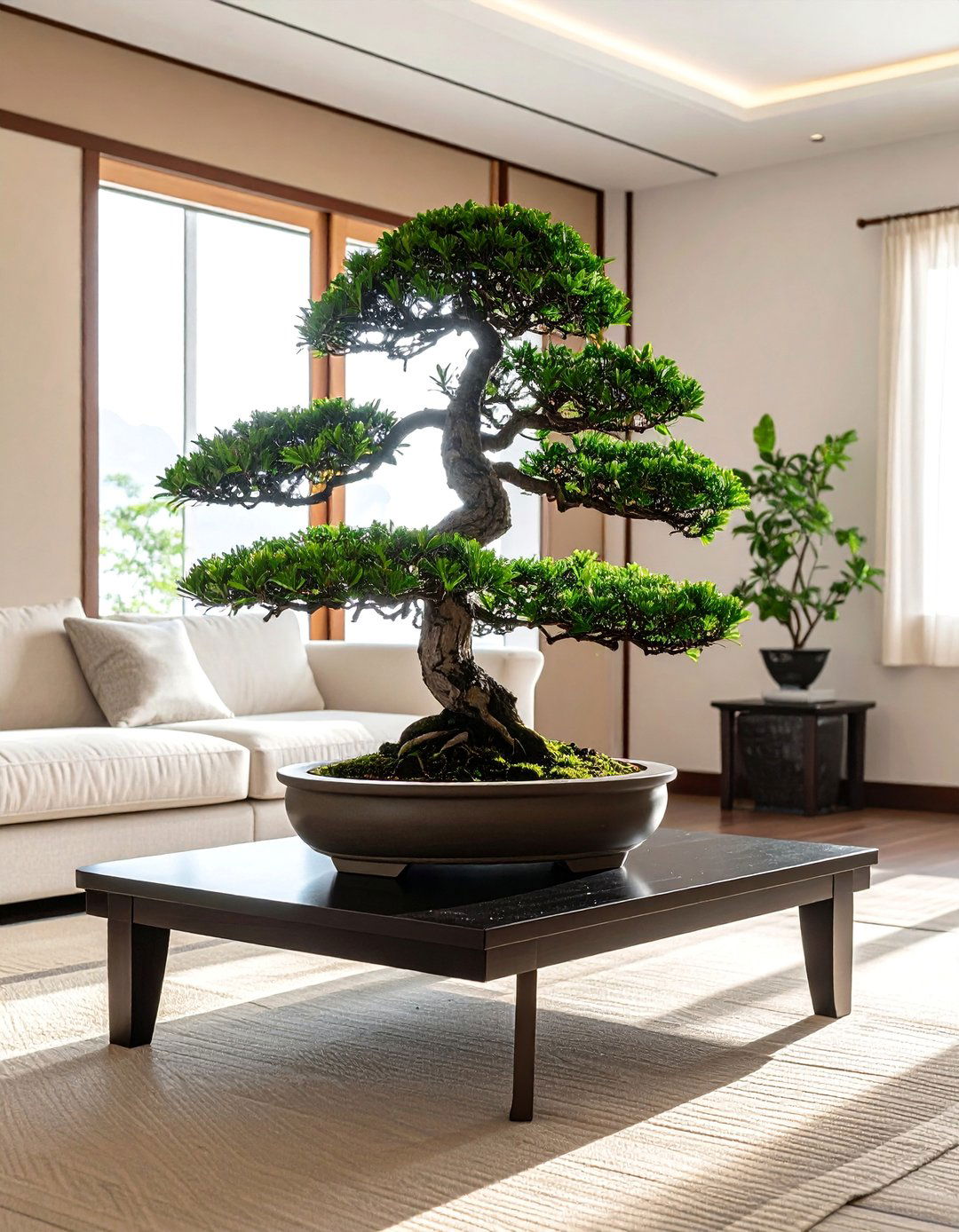
Using a meticulously pruned bonsai tree as a living room centerpiece introduces a living work of art. The bonsai symbolizes harmony, patience, and the beauty of nature in miniature form. Placed on a low table or a dedicated pedestal, it becomes a focal point for contemplation and adds a touch of organic elegance. This small but powerful element embodies the Zen philosophy of finding beauty in simplicity and imperfection (wabi-sabi). Caring for a bonsai also becomes a mindful practice, further enhancing the tranquil atmosphere of the space and reinforcing the connection between the indoor environment and the natural world.
7. Water Feature for Serenity
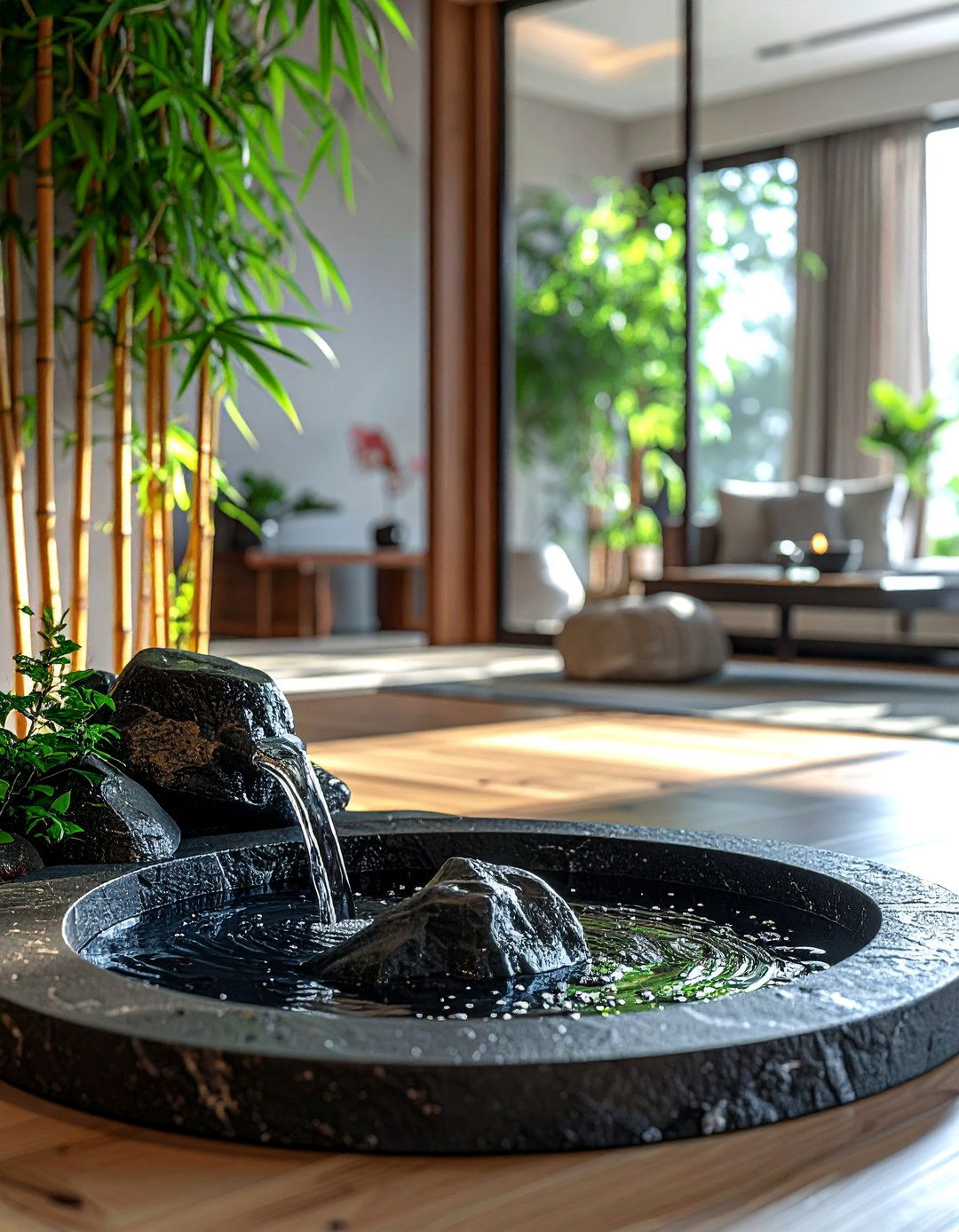
A small, indoor water feature can transform your living room into a sanctuary of serenity. The gentle sound of trickling water is known to reduce stress and promote a meditative state, making it a perfect addition to a Zen-inspired space. Whether it's a compact tabletop fountain made of bamboo and stone or a more integrated wall-mounted feature, it introduces the element of water, which represents flow and purity. This auditory and visual element enhances the room's calming ambiance, masking unwanted background noise and creating a constant, soothing presence that encourages relaxation and mindfulness throughout the day.
8. Japanese-Style Step Tansu Cabinet
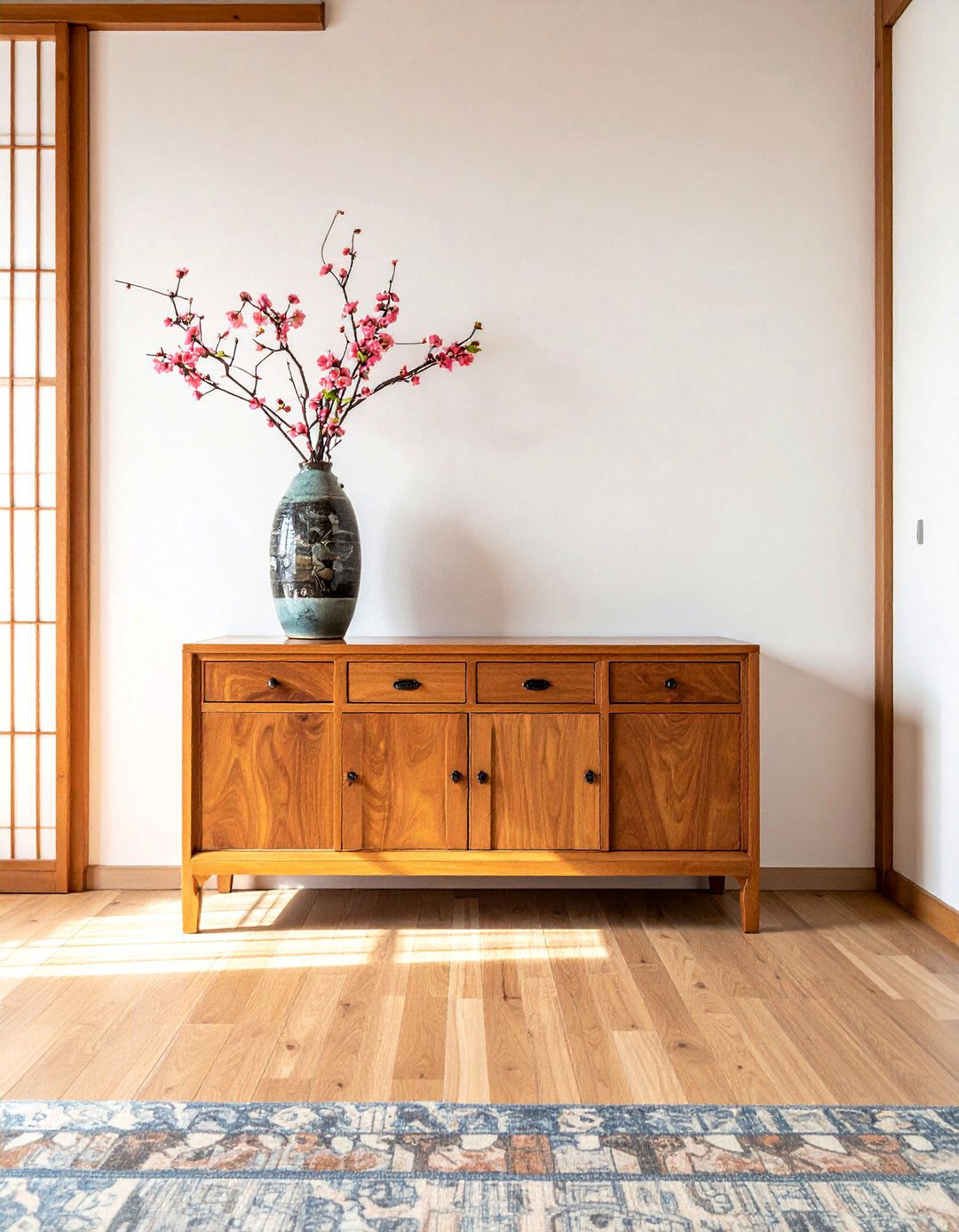
A Japanese-style step tansu cabinet offers both functional storage and a unique architectural element. Traditionally used as mobile staircases, these tiered chests feature a distinctive asymmetrical design with a combination of drawers and sliding doors. Crafted from rich-grained woods like kiri (paulownia) or sugi (cedar), a tansu adds warmth, texture, and historical character to the room. It’s an excellent piece for displaying select decorative objects while discreetly storing everyday items, helping to maintain a clutter-free environment. This functional work of art bridges the gap between furniture and sculpture, embodying a key principle of Asian design.
9. Neutral Color Palette with Earth Tones
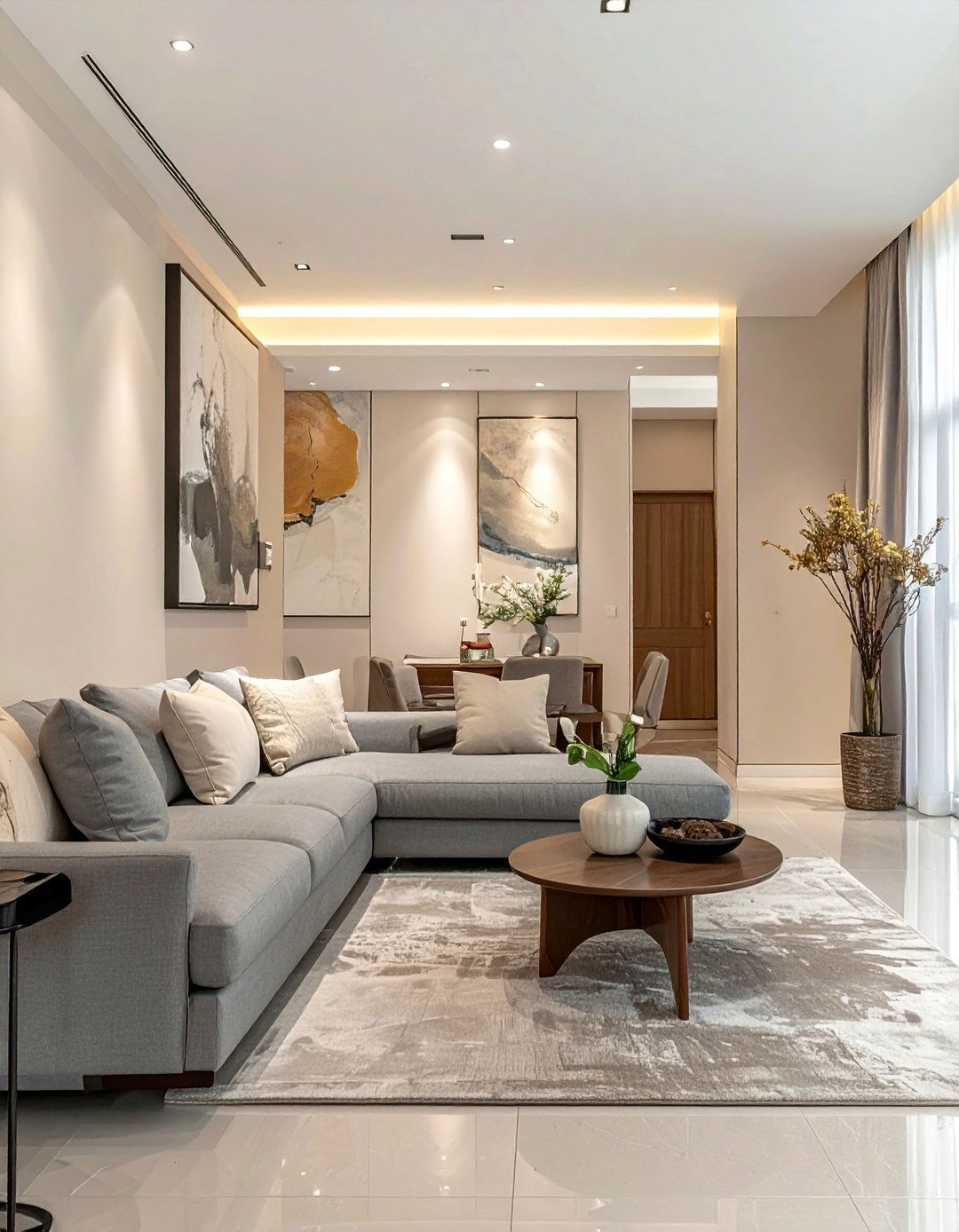
Adopting a neutral color palette dominated by earth tones is fundamental to creating a Zen-inspired living room. Shades of beige, cream, soft grey, and warm brown create a calming and harmonious backdrop that soothes the senses. These colors mimic the natural world, fostering a sense of tranquility and connection to the outdoors. This subtle and understated palette allows textures and forms to take center stage, preventing visual overstimulation. Accents can be introduced through natural materials like wood and stone, maintaining a cohesive and peaceful atmosphere that is essential for a truly restful living space.
10. Paper Lantern Pendant Lights
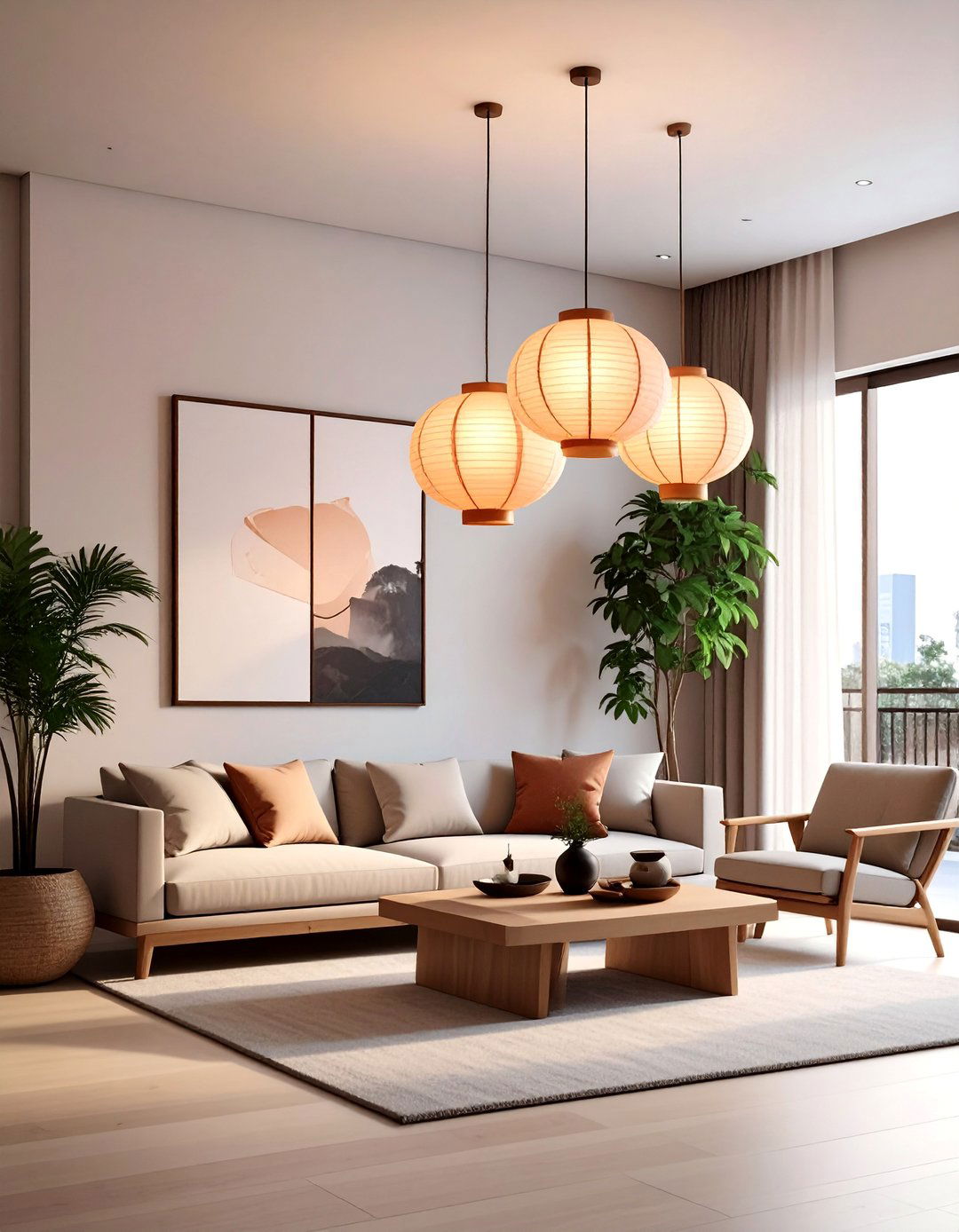
Hanging paper lantern pendant lights provides soft, diffused illumination that enhances a serene atmosphere. These iconic fixtures, often made from washi paper or silk stretched over a bamboo frame, cast a warm and gentle glow that is far more calming than harsh, direct lighting. Their simple, organic shapes—from spheres to cylinders—add a touch of understated elegance and artistry. By using these lanterns as a primary or secondary light source, you can create an inviting ambiance perfect for relaxation. This lighting choice aligns perfectly with the Zen aesthetic of simplicity, natural materials, and creating a harmonious environment.
11. Calligraphy Wall Art
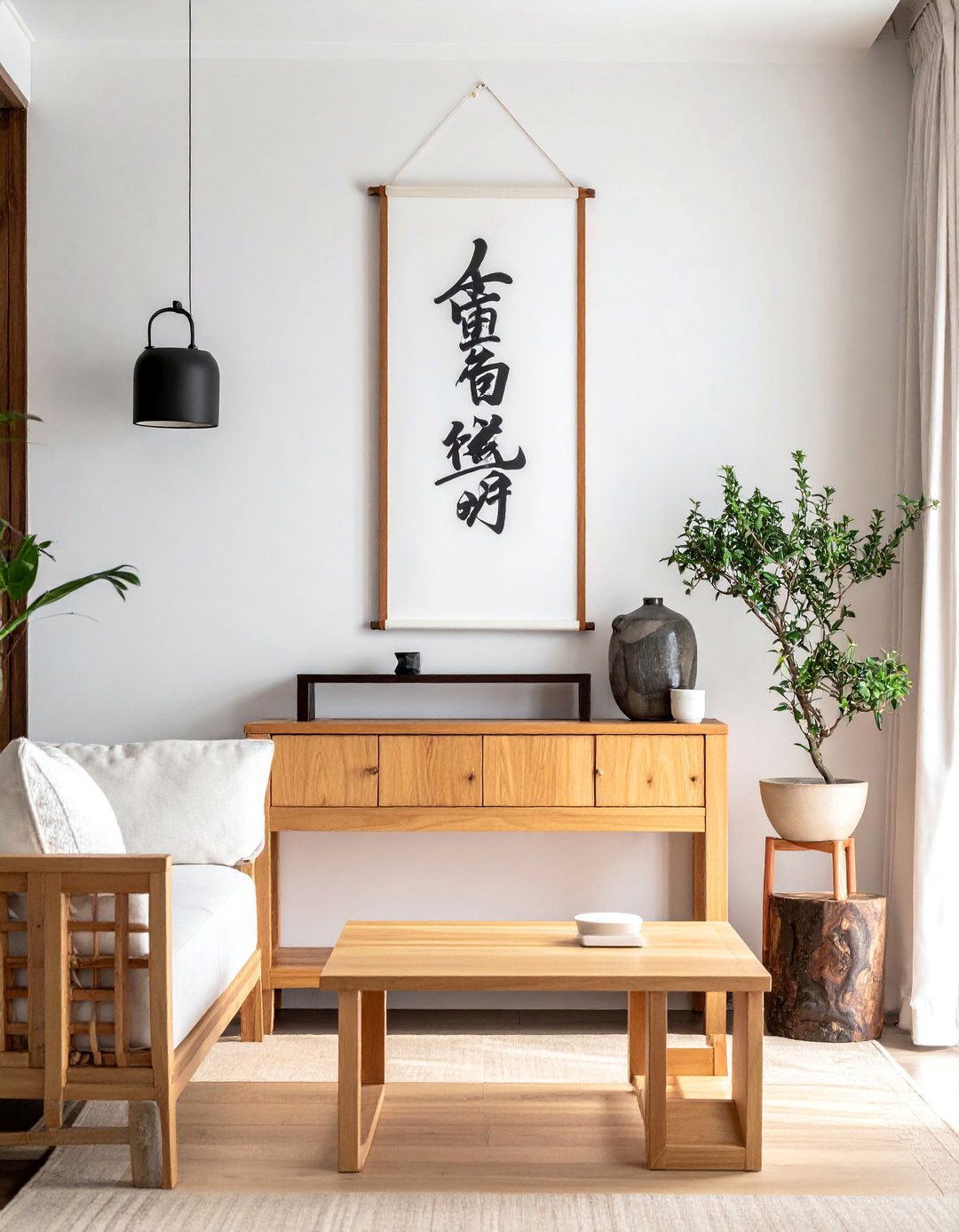
Displaying minimalist calligraphy wall art adds a touch of intellectual and artistic elegance to an Asian living room. A single, powerful scroll featuring a kanji character or a simple ink wash painting can serve as a profound focal point. This art form, known as Shodo in Japan, emphasizes simplicity, balance, and the beauty of a single brushstroke. It encourages contemplation and mindfulness, turning a simple wall into a source of inspiration. By choosing a piece that resonates with you, the art becomes more than decoration; it becomes a personal statement that enhances the room’s tranquil and thoughtful atmosphere.
12. Low Wooden Coffee Table
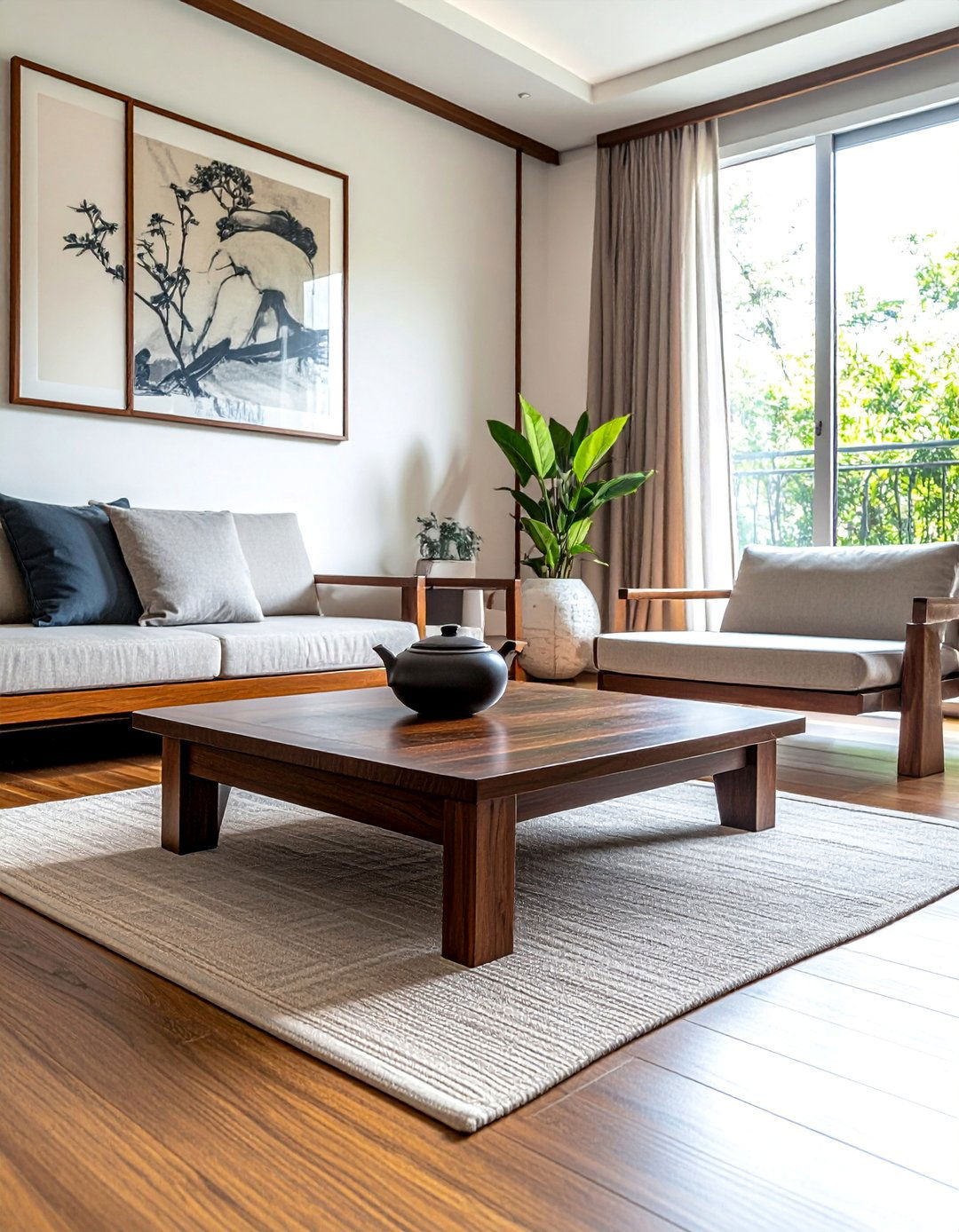
A low wooden coffee table is a central element in a Zen-inspired living room, anchoring the seating area and promoting a grounded feel. Typically crafted from natural woods like oak, teak, or reclaimed elm, these tables feature clean lines and a minimalist design. Their low height complements platform seating and floor cushions, encouraging a more relaxed and communal atmosphere. The surface is perfect for a simple tea set, a single bonsai, or a small tray for essentials, discouraging clutter. This piece of furniture embodies the principles of simplicity, natural materials, and functionality that are hallmarks of Asian design.
13. Silk Throw Pillows with Nature Motifs
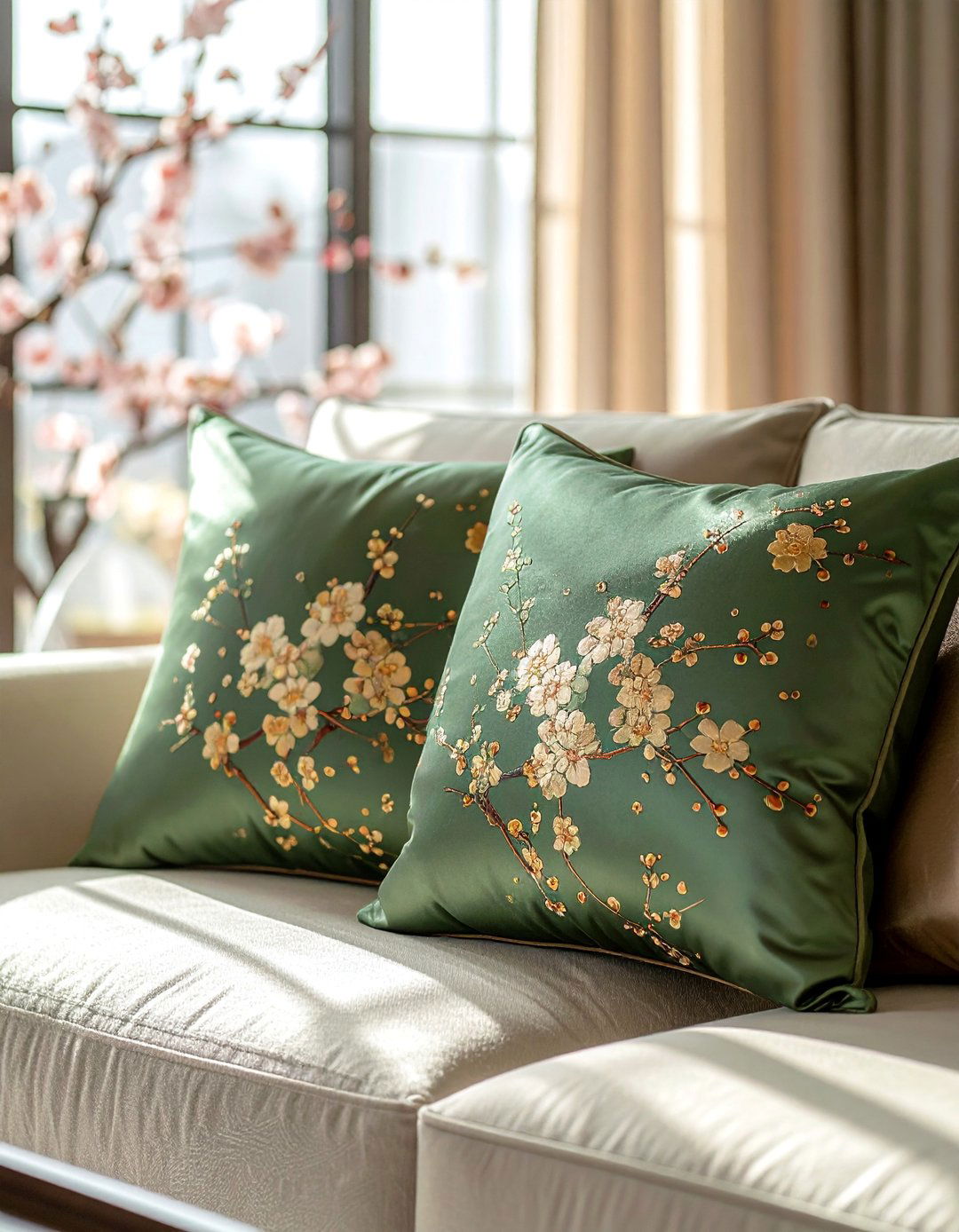
Introducing silk throw pillows with subtle nature motifs adds a layer of comfort and refined beauty. Choose pillows in muted, earthy tones embroidered with delicate patterns like cherry blossoms, bamboo stalks, or koi fish. Silk, as a material, brings a touch of luxury and a soft texture that contrasts pleasingly with coarser natural fabrics like linen or cotton. These decorative accents provide an opportunity to introduce color and pattern in a controlled and elegant manner, without disrupting the room's overall sense of calm. They serve as small, artistic details that celebrate nature and enhance the space's sophisticated tranquility.
14. Orchids in Simple Ceramic Pots
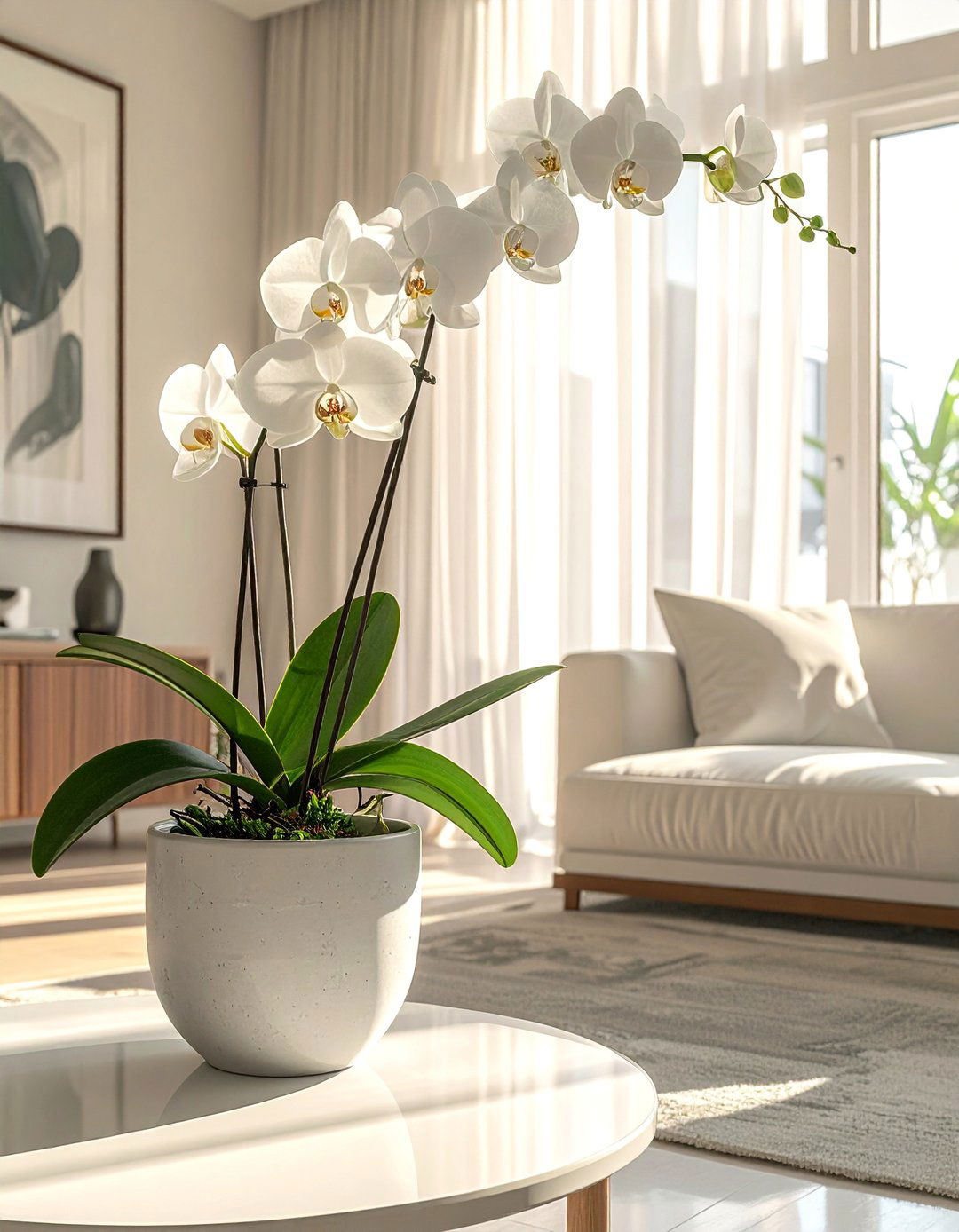
Placing orchids in simple ceramic pots adds a touch of living elegance and natural beauty to the room. The orchid is a symbol of purity, grace, and refinement in many Asian cultures. Its sculptural form and delicate blossoms provide a stunning visual contrast to the minimalist surroundings. Housed in an unadorned ceramic or stone pot, the focus remains on the plant's natural artistry. This simple decorative element requires minimal space but has a significant impact, introducing a pop of color and a living element that breathes life into the serene environment, reinforcing the connection to the natural world.
15. Built-in Wooden Wall Niches
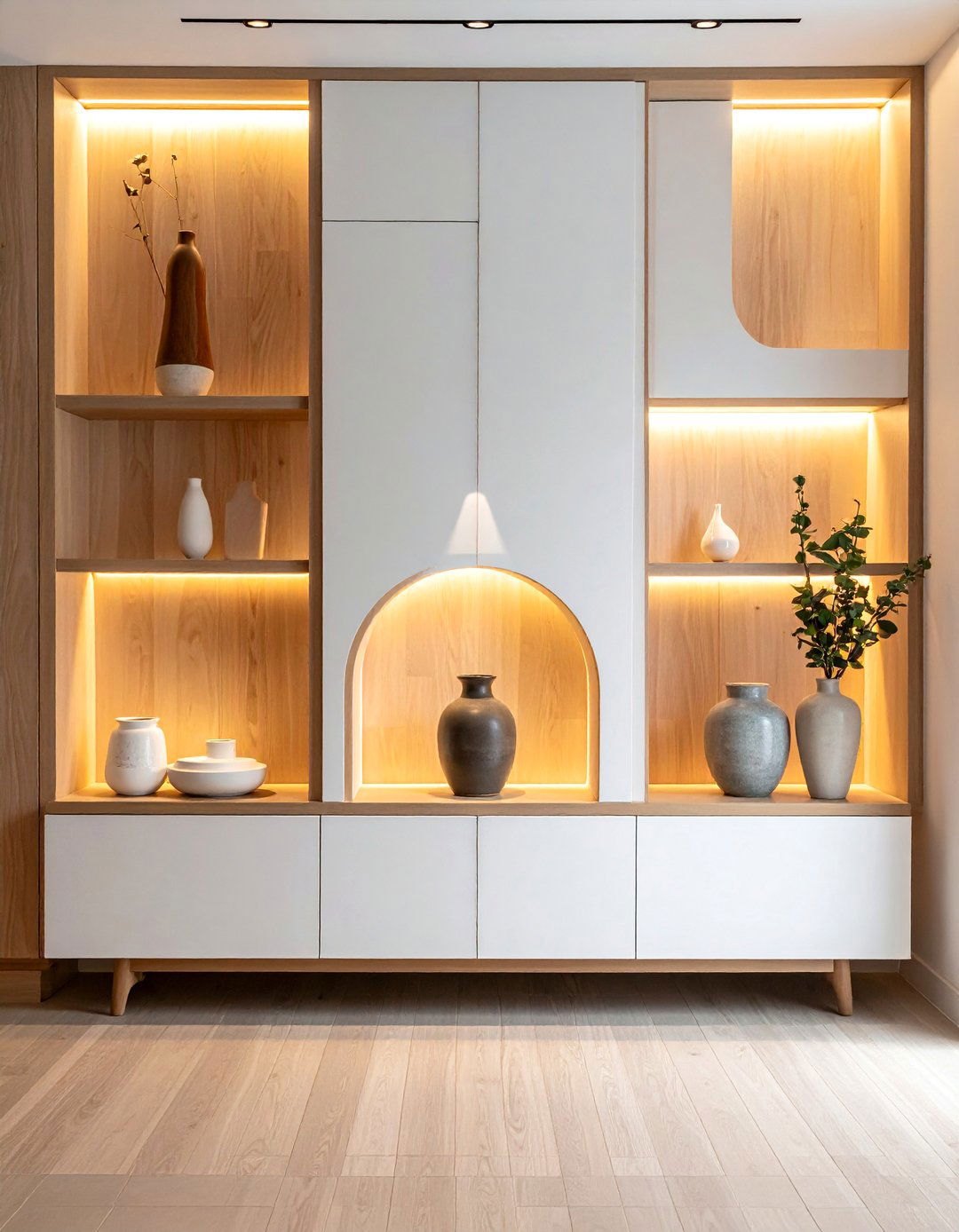
Incorporating built-in wooden wall niches provides an elegant solution for display and storage. These recessed shelves, often lined with a contrasting wood or subtle backlighting, create a clean and integrated look. They are perfect for showcasing a few carefully selected items, such as a single piece of pottery, a small sculpture, or a collection of antique tea bowls. This design feature prevents the need for bulky shelving units, helping to maintain a clutter-free and open space. The niches add architectural depth and a sense of intention to the room, turning everyday objects into curated works of art.
16. Floor Cushions for Versatile Seating
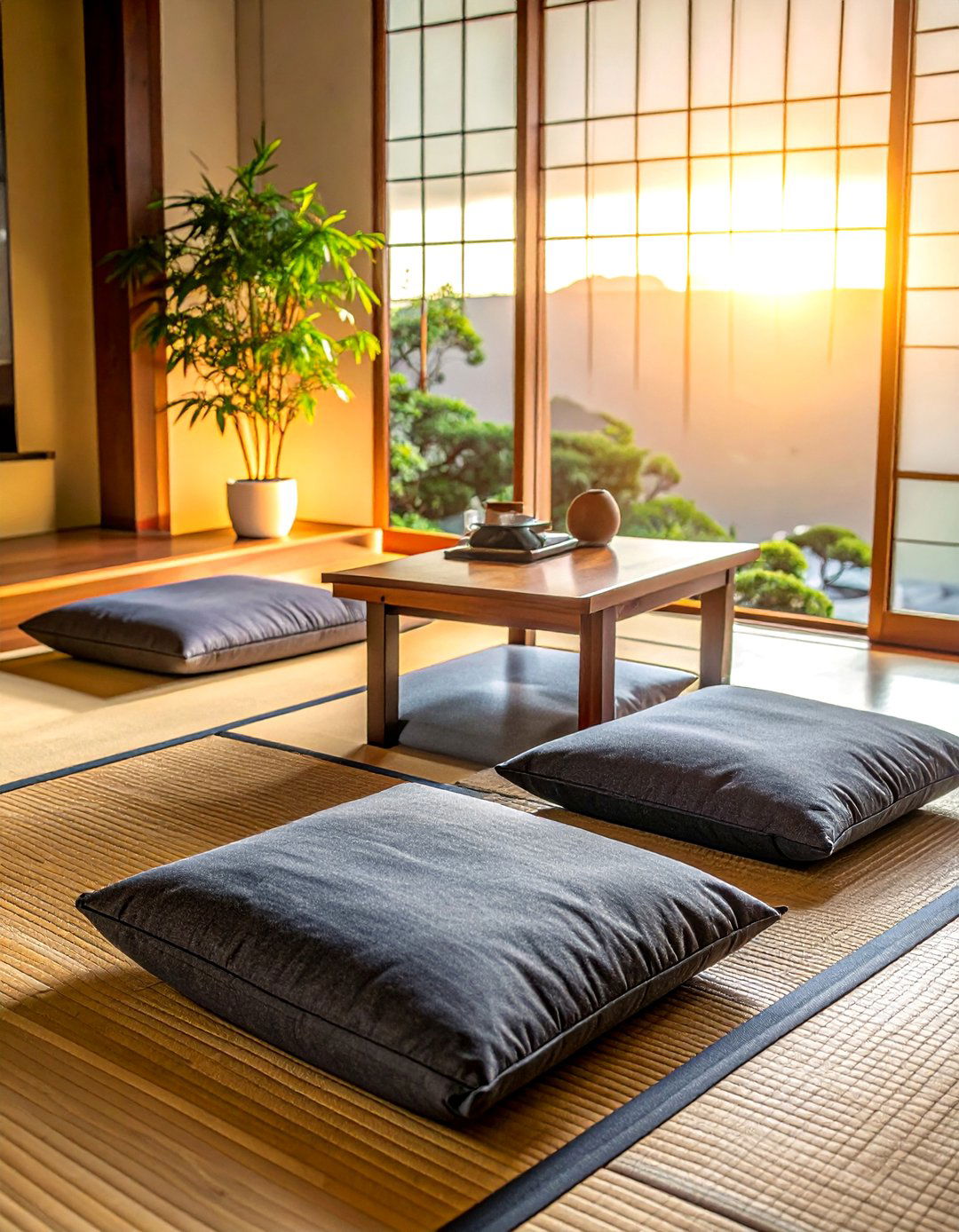
Arranging a set of floor cushions, known as zabuton in Japan, offers a versatile and informal seating option. These cushions encourage a grounded, relaxed posture and can be easily moved or stored away, making the space adaptable for various activities like meditation, tea, or social gatherings. Typically filled with cotton and covered in simple, natural fabrics, they add a layer of comfort and texture to the room. Placed around a low coffee table, they create an intimate and inviting atmosphere that is central to the Zen lifestyle, promoting simplicity and a connection to the earth.
17. Minimalist Entertainment Center
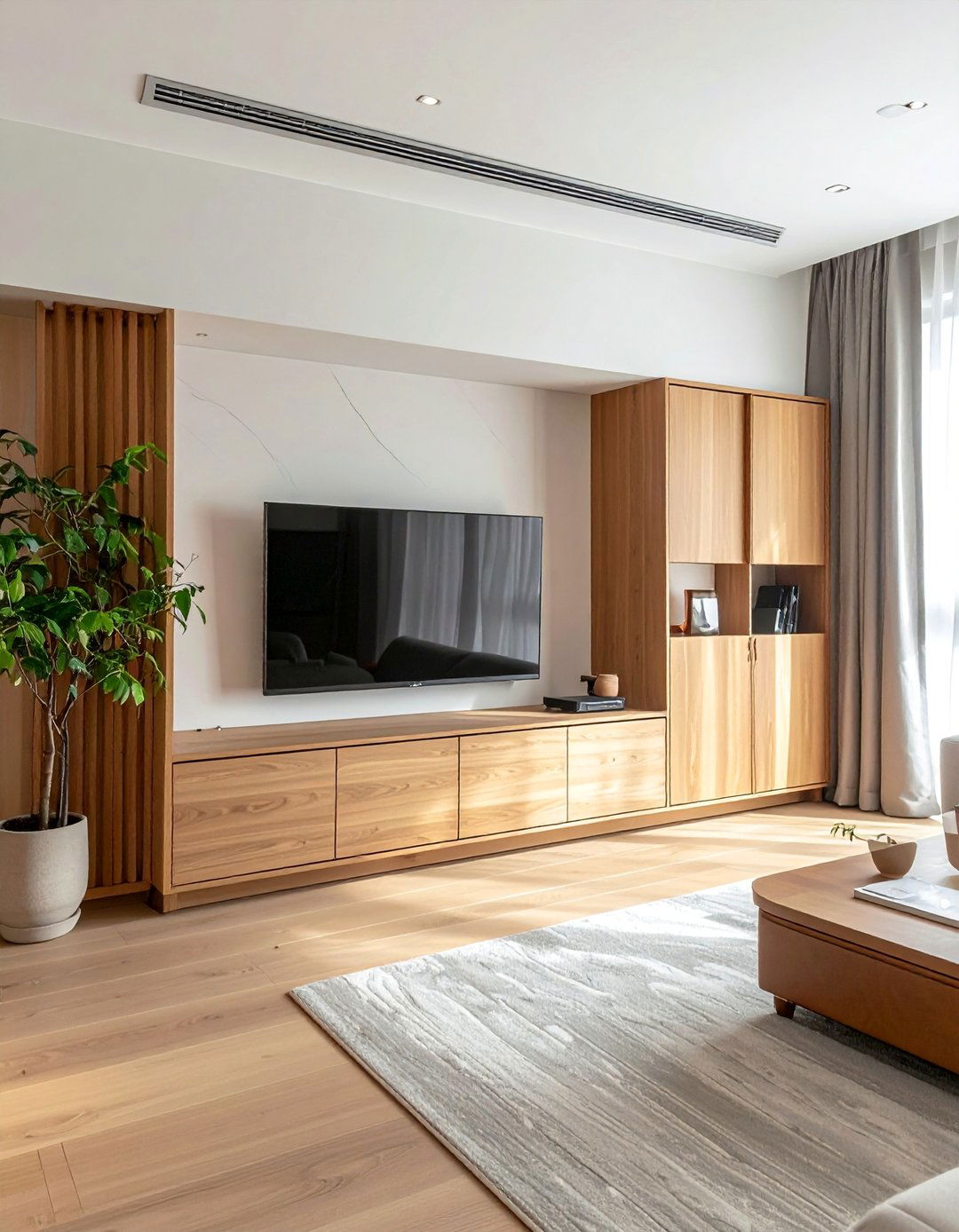
A minimalist entertainment center is crucial for maintaining a serene and uncluttered living room. Opt for a low-profile console made from natural wood with clean lines and concealed storage. Sliding doors or handleless drawers help to hide away electronics, cables, and media, reducing visual noise. The goal is to integrate technology seamlessly into the tranquil environment rather than letting it dominate the space. By keeping the design simple and functional, the entertainment center supports a modern lifestyle without compromising the core principles of Zen design, ensuring the room remains a peaceful retreat.
18. Rattan or Wicker Furniture Accents
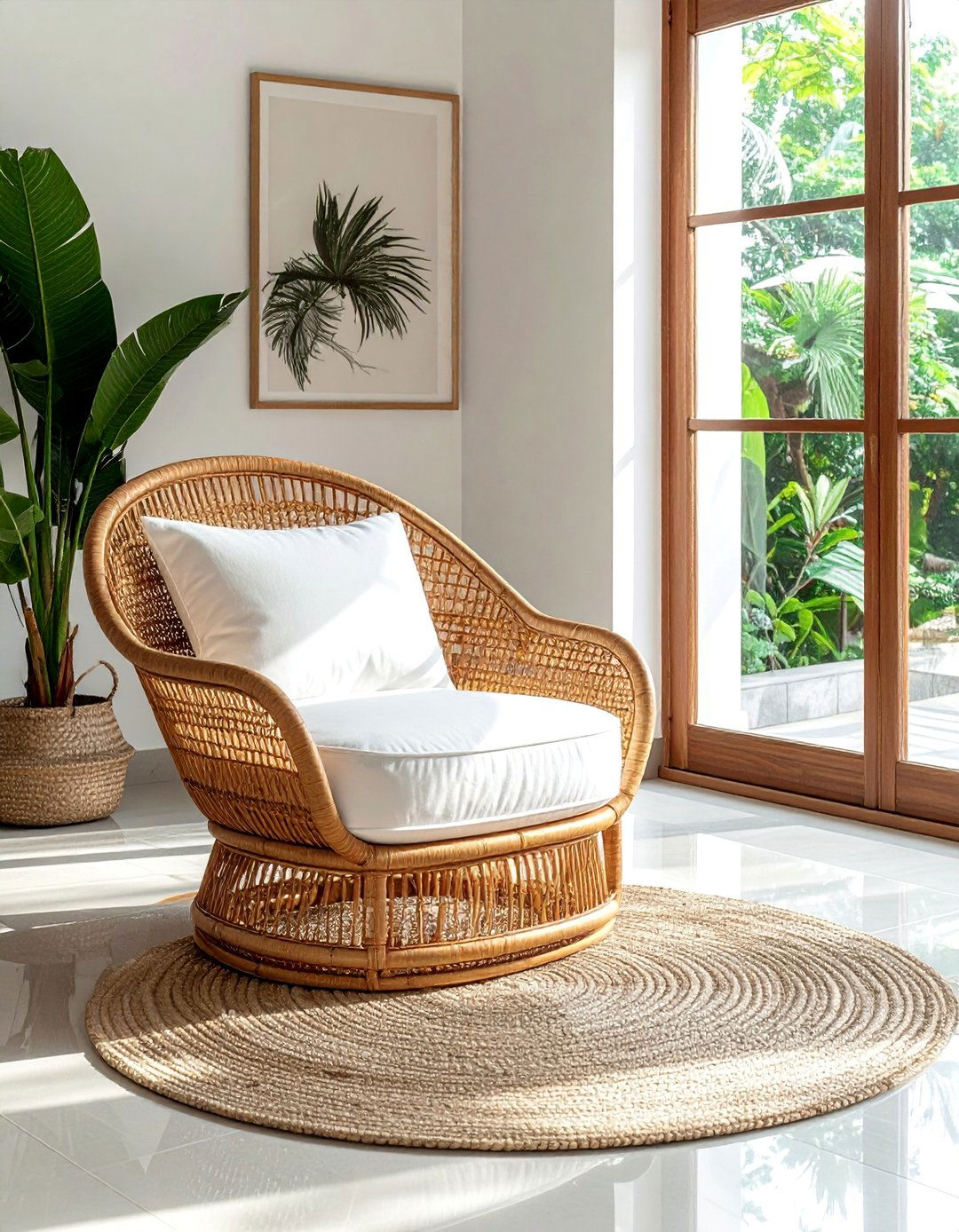
Adding rattan or wicker furniture accents introduces natural texture and a touch of organic warmth. A single rattan armchair, a woven wicker storage basket, or a pendant light made from these materials can break the monotony of smooth surfaces. These lightweight, natural fibers complement wooden elements and neutral color palettes beautifully. They bring a subtle, rustic charm that enhances the room's connection to nature without feeling cluttered or heavy. This approach allows you to layer different textures, adding depth and interest to the space while upholding the principles of simplicity and naturalism found in Asian design.
19. Simple Tea Set Display
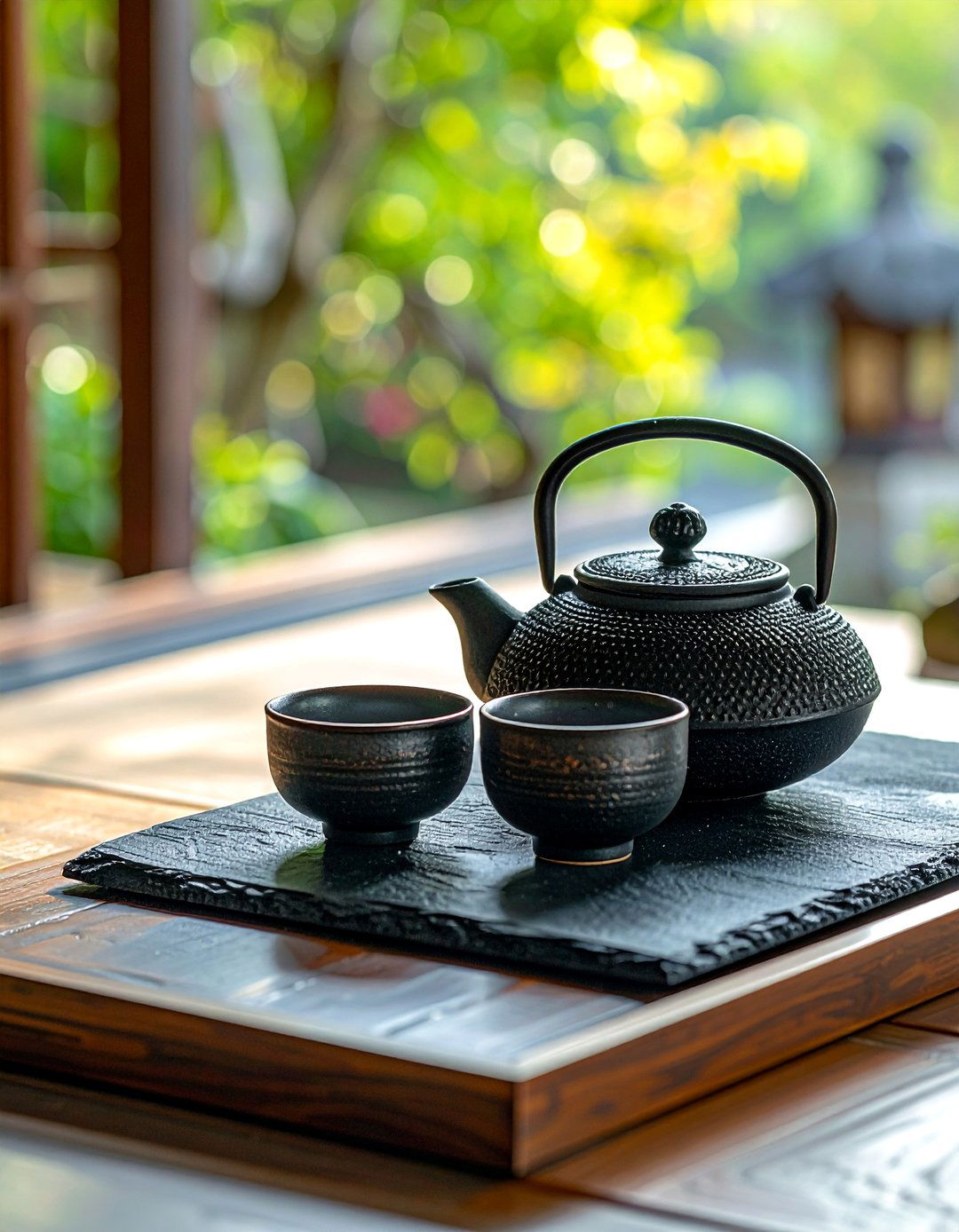
Displaying a simple, elegant tea set serves as a beautiful decorative accent that also hints at the practice of mindfulness. A traditional ceramic or cast iron teapot with a few small cups, arranged neatly on a wooden tray, can be placed on a low table or in a wall niche. This arrangement celebrates the ritual of tea, a practice deeply rooted in Zen philosophy that encourages slowing down and appreciating the present moment. The tea set itself, with its simple forms and earthy materials, becomes a piece of functional art that enhances the room's tranquil and contemplative atmosphere.
20. Sheer Curtains for Diffused Natural Light
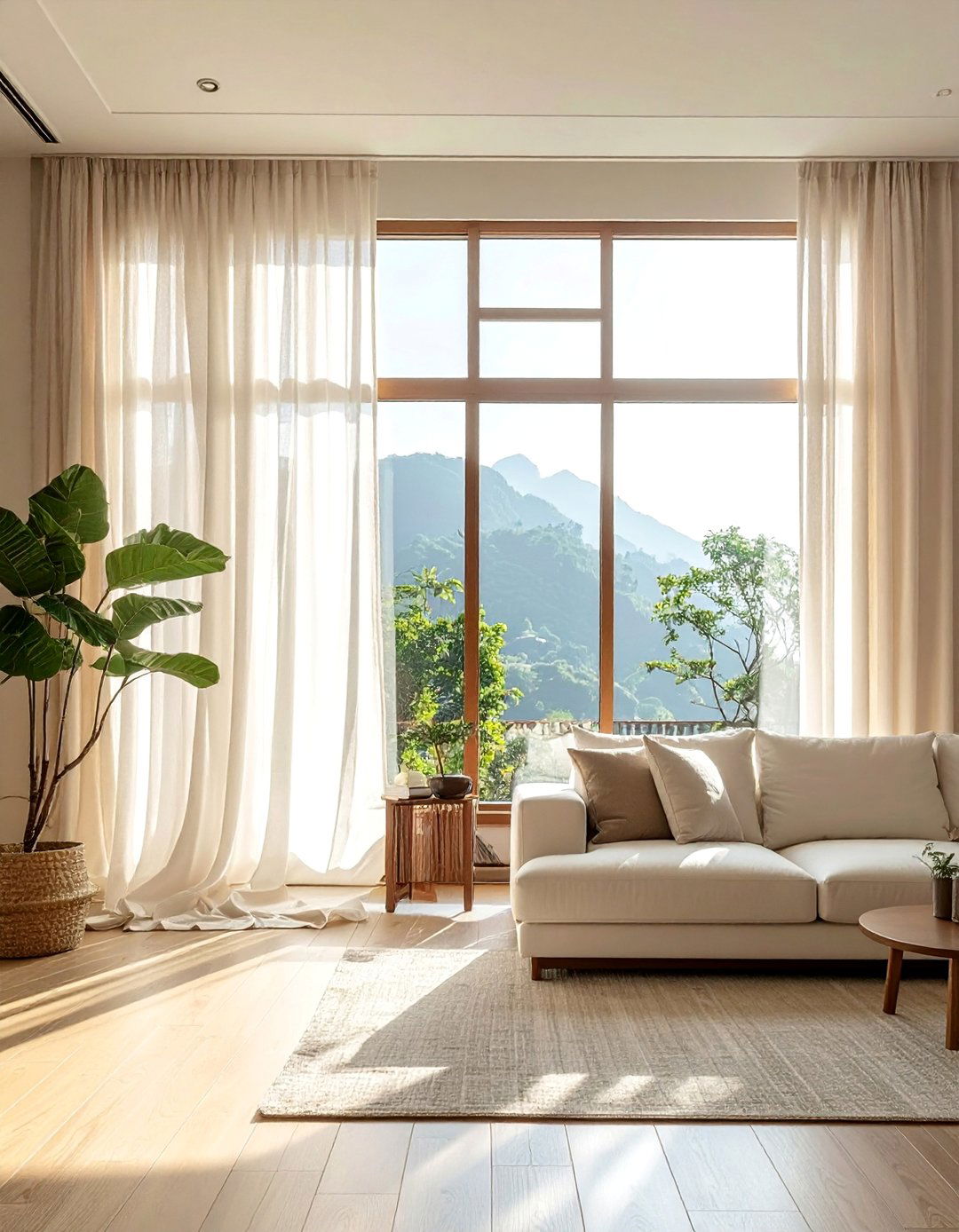
Using sheer curtains made from lightweight fabrics like linen or voile allows you to maximize natural light while maintaining privacy. These window treatments diffuse sunlight, filling the room with a soft, ethereal glow that enhances the sense of peace and openness. Unlike heavy drapes, sheer curtains do not obstruct the view or create harsh shadows, contributing to an airy and uncluttered aesthetic. By allowing the gentle morning or afternoon light to filter through, you create a connection to the outdoors and the changing times of day, which is a key aspect of living in harmony with nature.
21. Chinese Altar Console Table
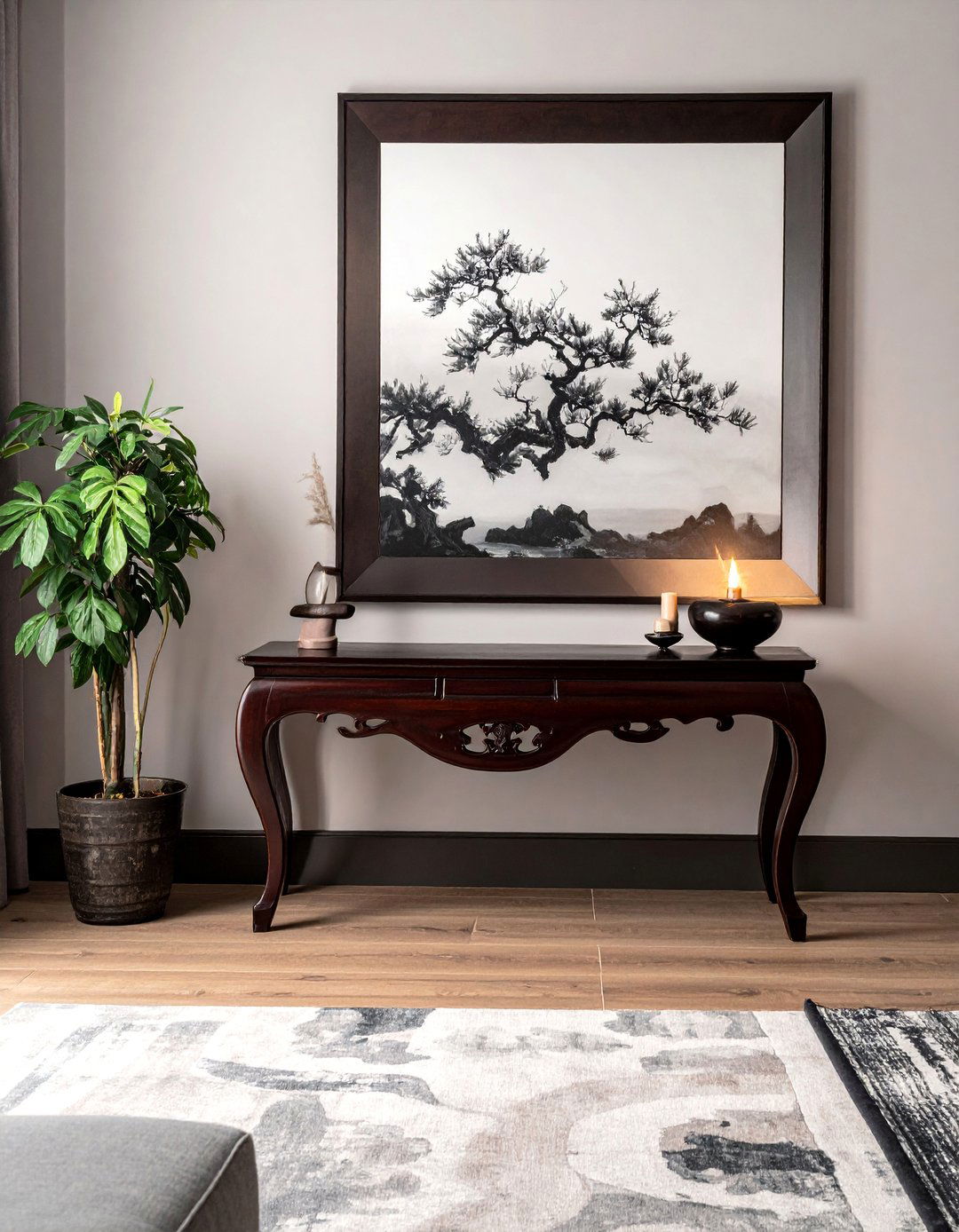
A Chinese altar console table can be a striking and elegant addition to a Zen-inspired living room. Characterized by their clean lines, upward-curving flanges, and often intricate joinery without the use of nails, these tables bring a sense of history and craftsmanship. Placed against a wall, an altar table provides a perfect surface for a single piece of art, a vase with a simple floral arrangement, or a small sculpture. Its narrow profile makes it ideal for smaller spaces, adding a touch of sophisticated Asian heritage without overwhelming the minimalist decor, blending form and function seamlessly.
22. Wall-Mounted Floating Shelves
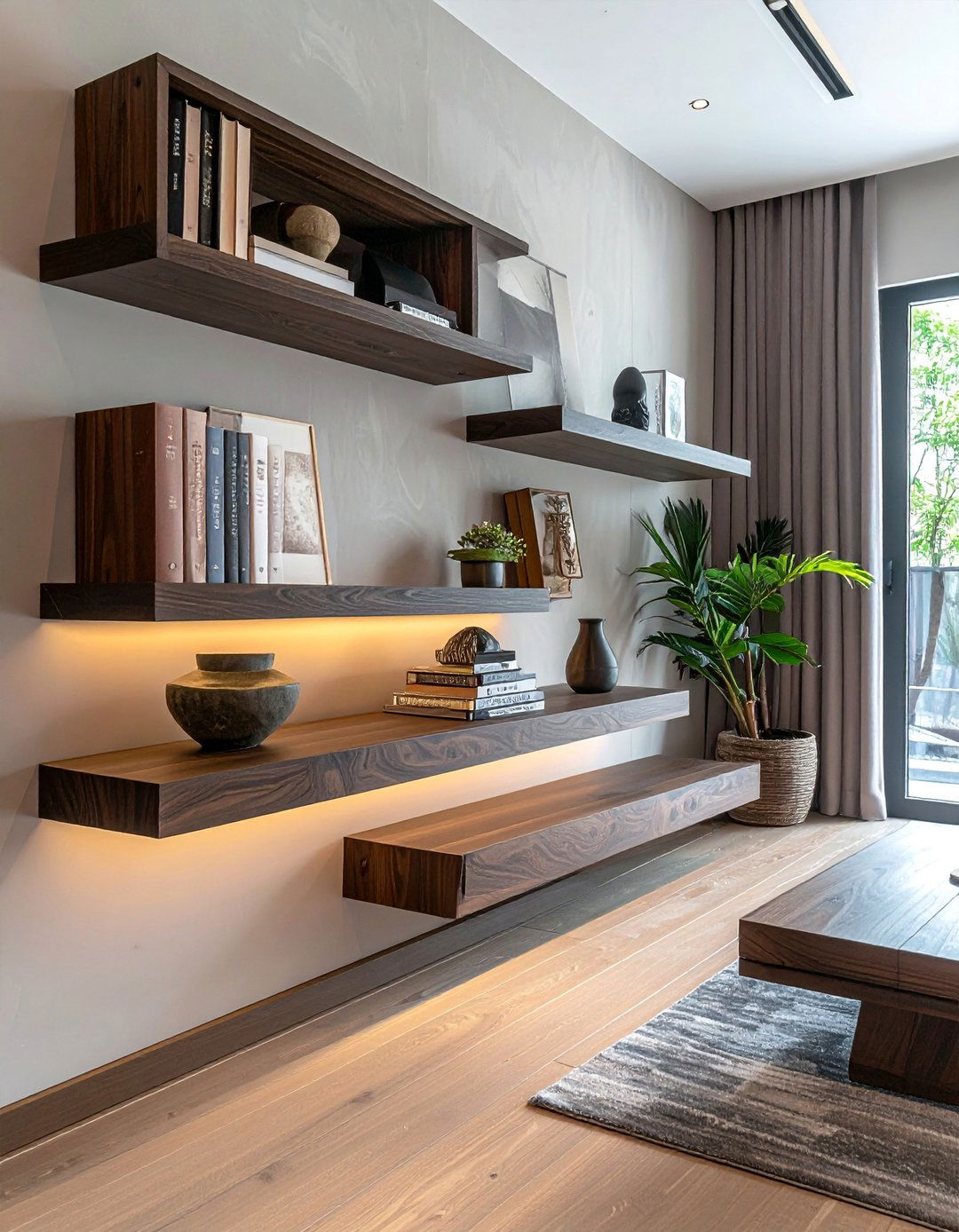
Installing wall-mounted floating shelves is a modern and minimalist way to handle display needs. These shelves create clean, horizontal lines that contribute to the room's serene and uncluttered aesthetic. Use them sparingly to showcase a few carefully chosen decorative items, such as pottery, small plants, or meaningful artifacts. By keeping the displays minimal, you avoid visual clutter and draw attention to the beauty of each individual object. The floating design makes the shelves appear light and unobtrusive, preserving the sense of open space that is essential for a peaceful, Zen-inspired environment.
23. Hand-Painted Silk Wall Panels
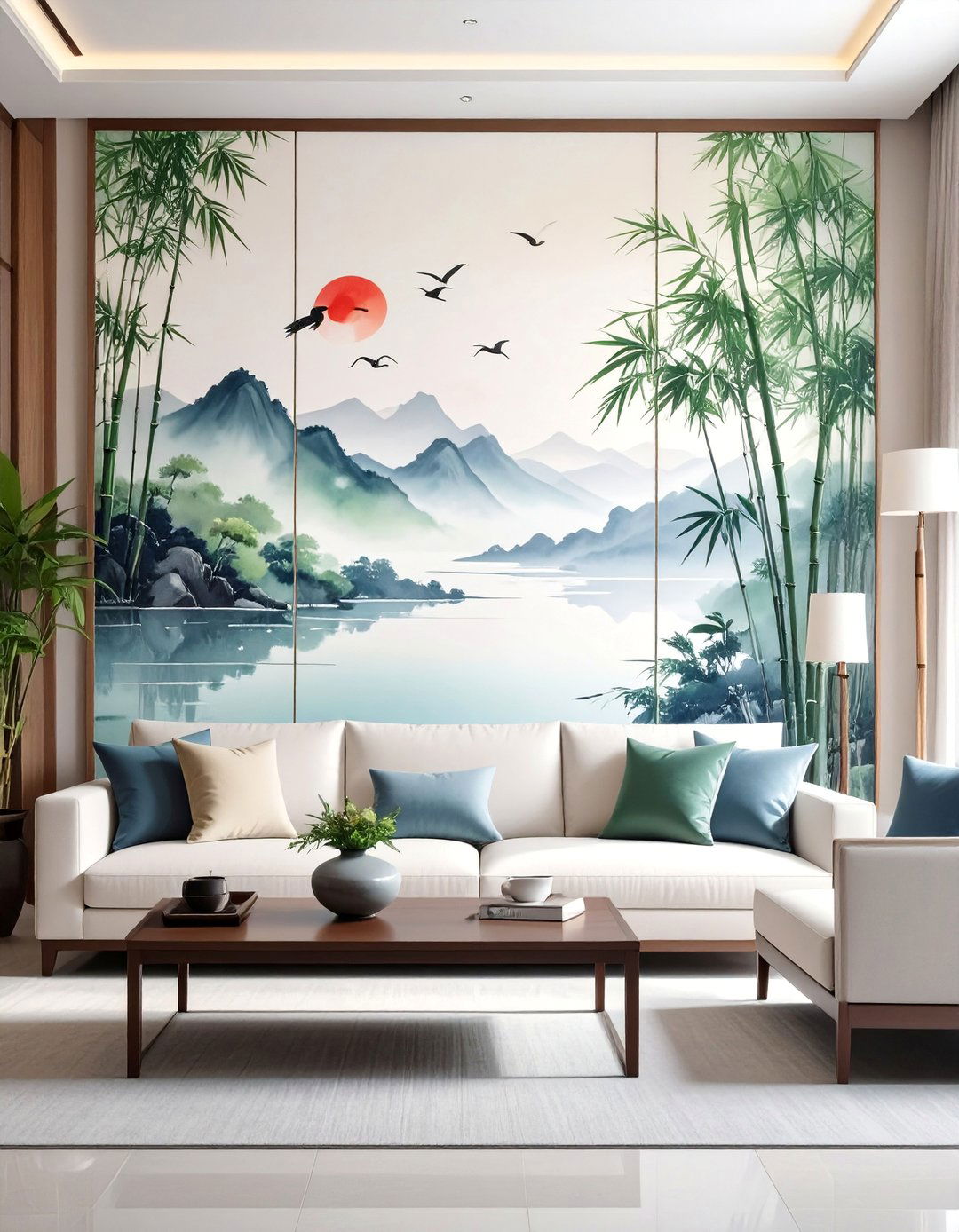
Hanging hand-painted silk wall panels can introduce a touch of artistry and traditional elegance. These panels often feature delicate, nature-inspired motifs such as birds, flowers, or serene landscapes, rendered in soft, subtle colors. Used as a single focal point or as a series to create a larger mural, they add a layer of texture and sophisticated detail to the room. The luxurious sheen of the silk contrasts beautifully with more rustic materials like wood and stone. This decorative choice serves as a timeless piece of art that reflects the beauty of the natural world and enhances the room’s tranquil character.
24. Ikebana-Style Flower Arrangement
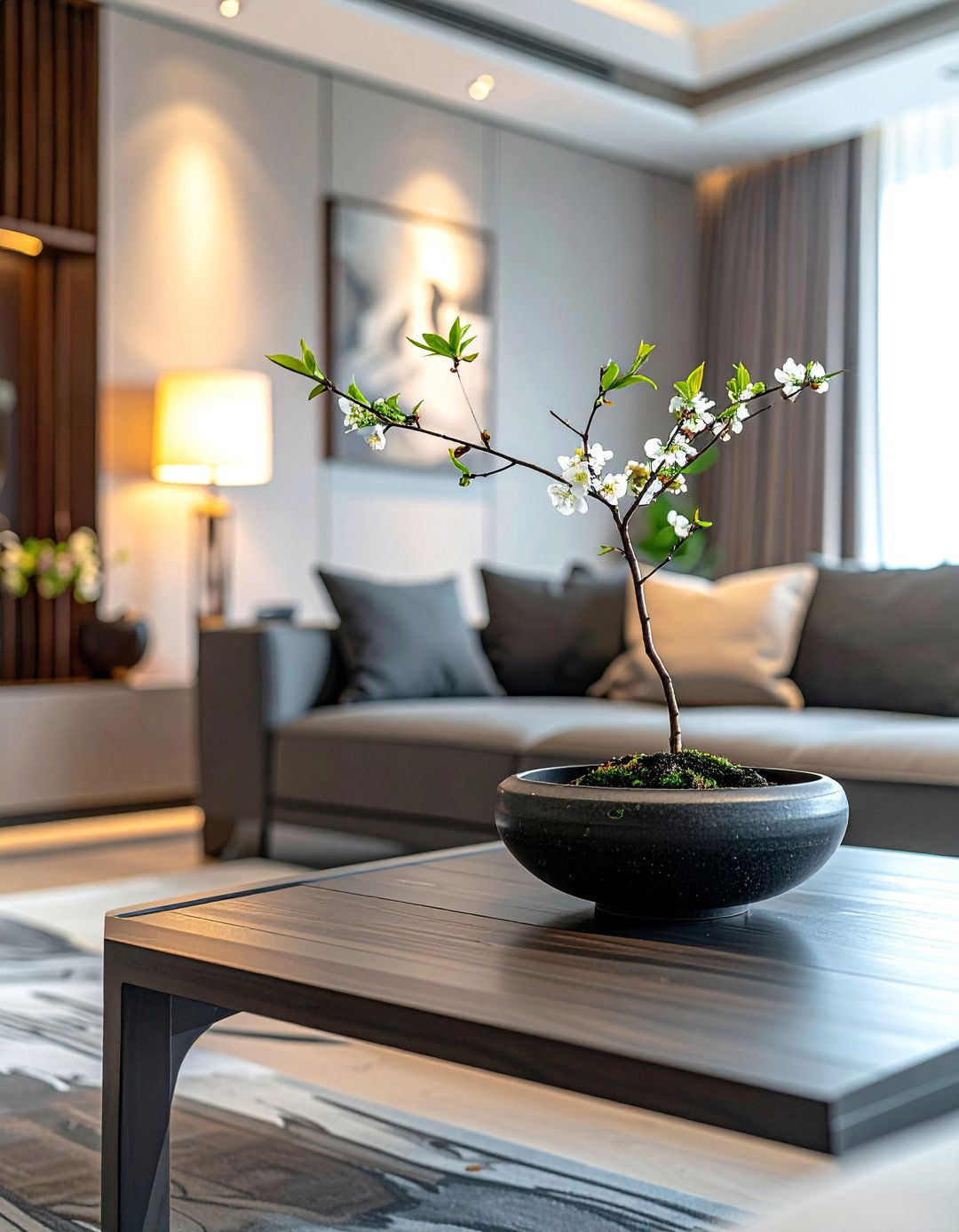
An Ikebana-style flower arrangement brings a disciplined and artistic approach to floral decor. Unlike dense Western bouquets, Ikebana, the Japanese art of flower arranging, emphasizes space, line, and form. A simple arrangement might consist of just a few stems, branches, and leaves carefully placed in a shallow vessel or a tall, slender vase. This minimalist approach highlights the natural beauty of each element and creates a sense of balance and harmony. Placed on a console table or in a corner, an Ikebana arrangement becomes a living sculpture that embodies the Zen principles of simplicity and appreciation for nature.
25. Subtle Metallic Accents
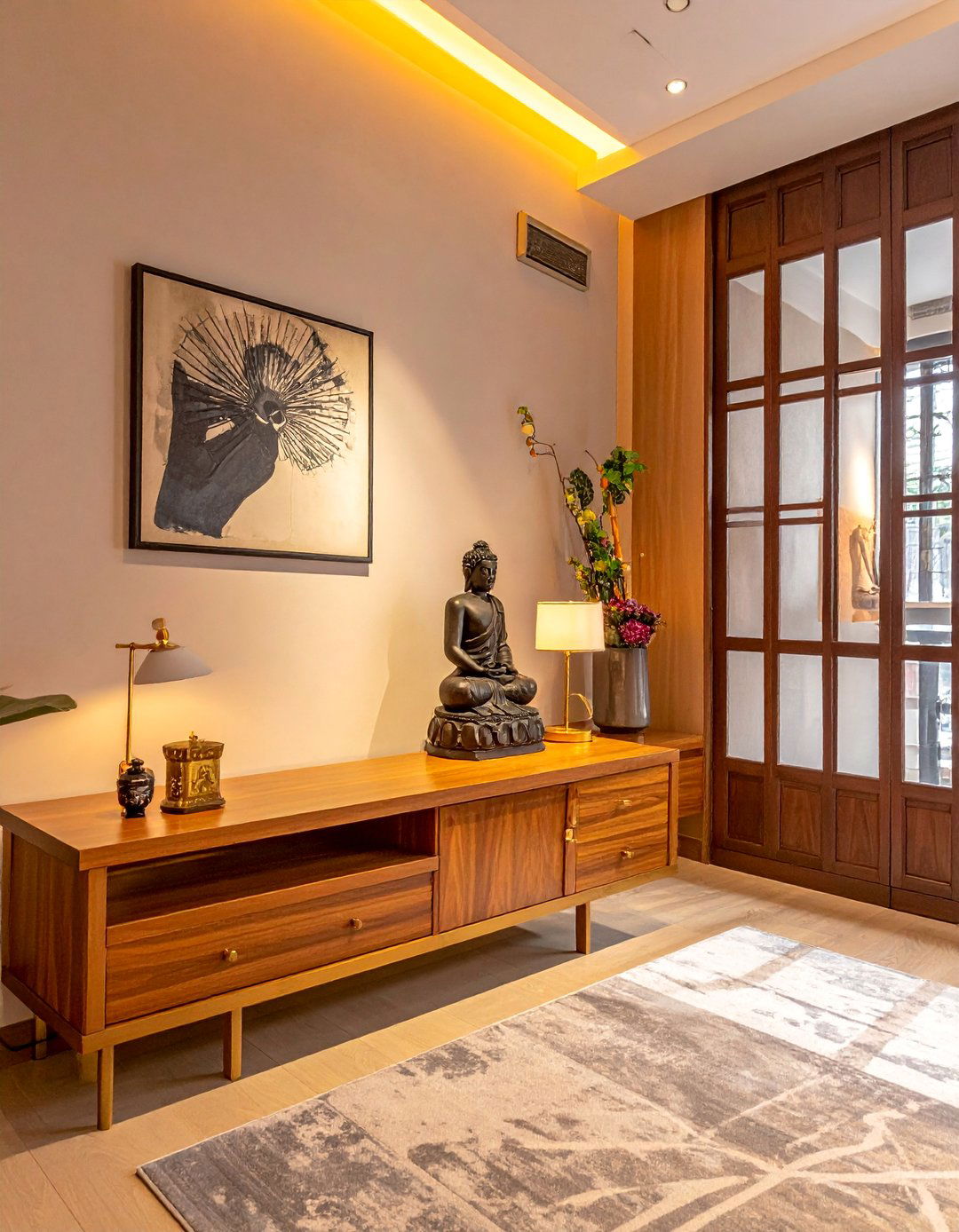
Incorporating subtle metallic accents, such as bronze or brushed gold, can add a touch of warmth and quiet luxury. Think of a small bronze statue, a vase with a metallic glaze, or the hardware on a tansu cabinet. These elements should be used sparingly to catch the light and provide a gentle contrast to the natural wood, stone, and fabric textures. The key is to avoid anything too shiny or ostentatious. These understated metallic touches elevate the design without disrupting the room's peaceful and harmonious atmosphere, adding a final layer of sophistication to your Zen-inspired living space.
Conclusion:
Ultimately, creating an Asian-inspired living room is about more than just aesthetics; it's about crafting an environment that promotes peace, balance, and mindfulness. By integrating natural materials, a neutral color palette, and minimalist furnishings, you can design a space that feels both elegant and serene. Each element, from low-profile seating to a simple bonsai tree, should be chosen with intention to cultivate a clutter-free and harmonious atmosphere. This approach allows your living room to become a true sanctuary, a place where you can unwind, recharge, and connect with a sense of inner calm.

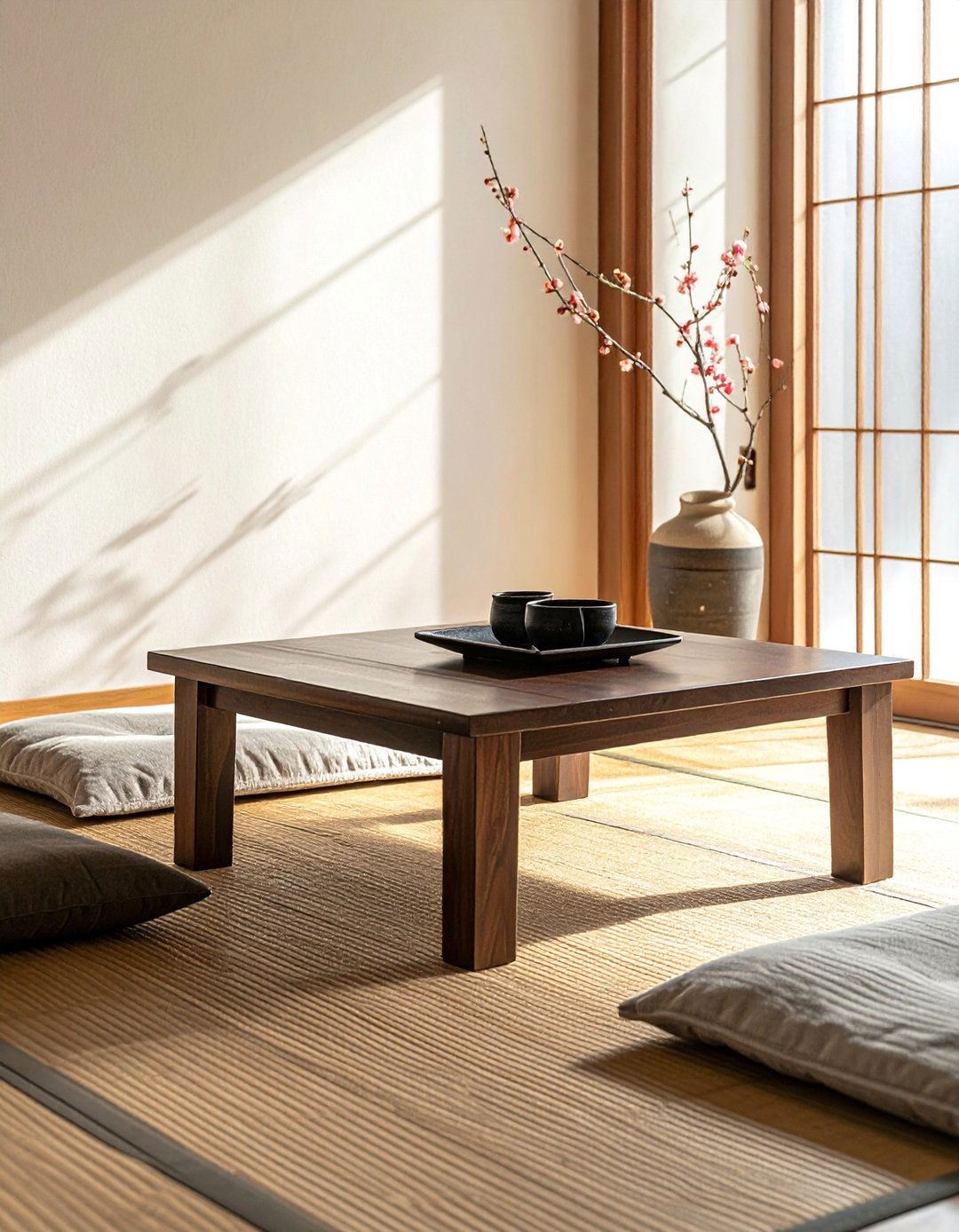
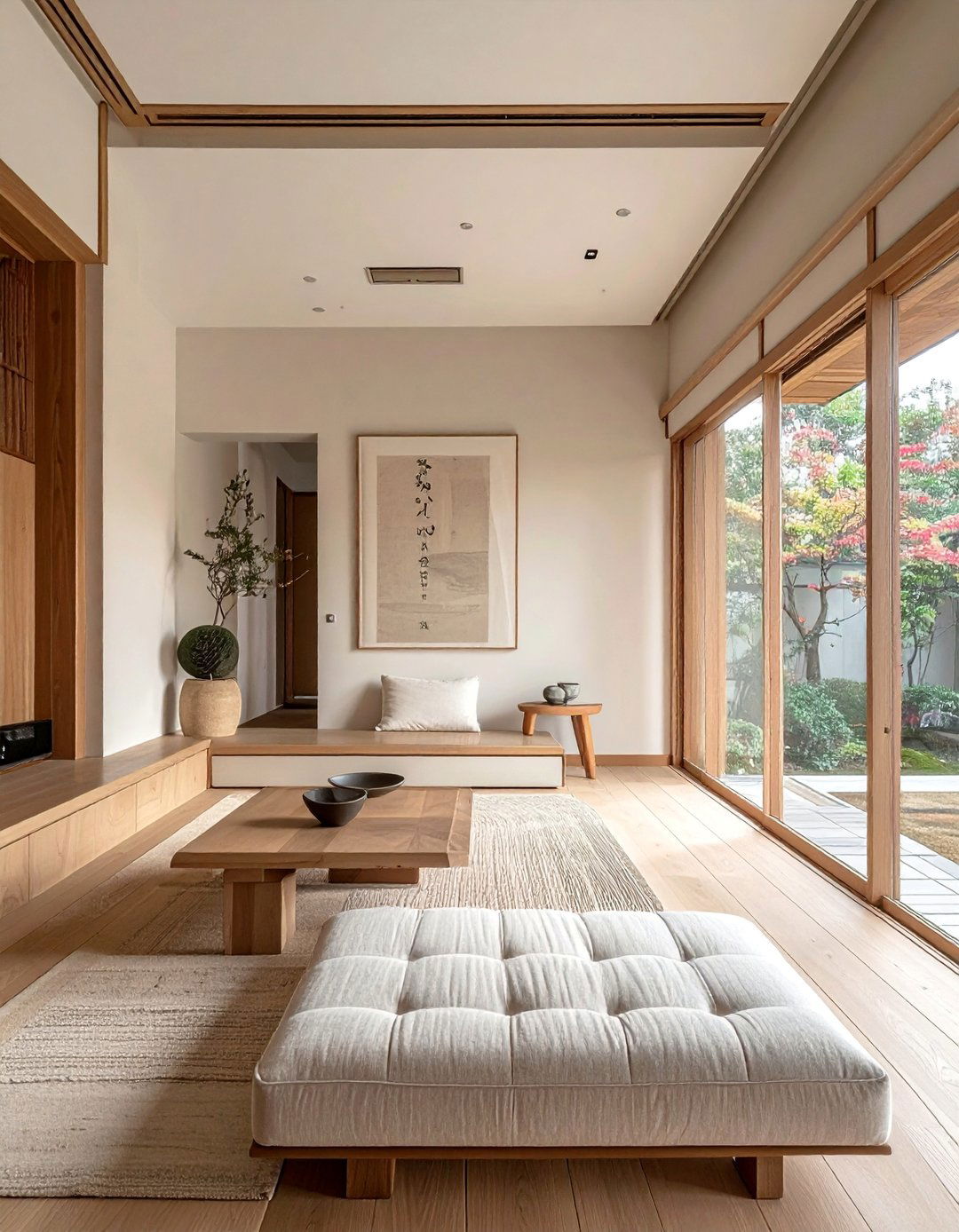
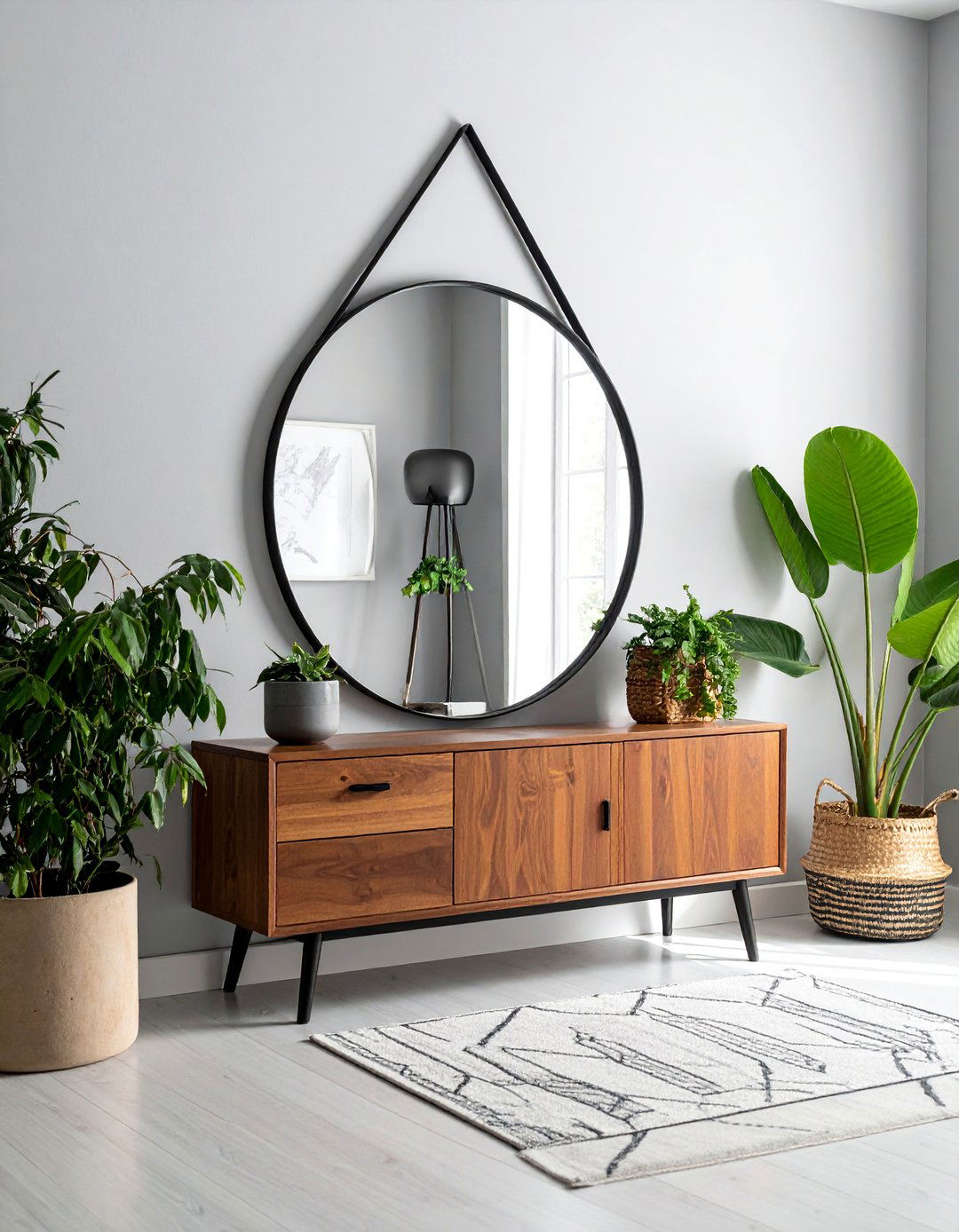
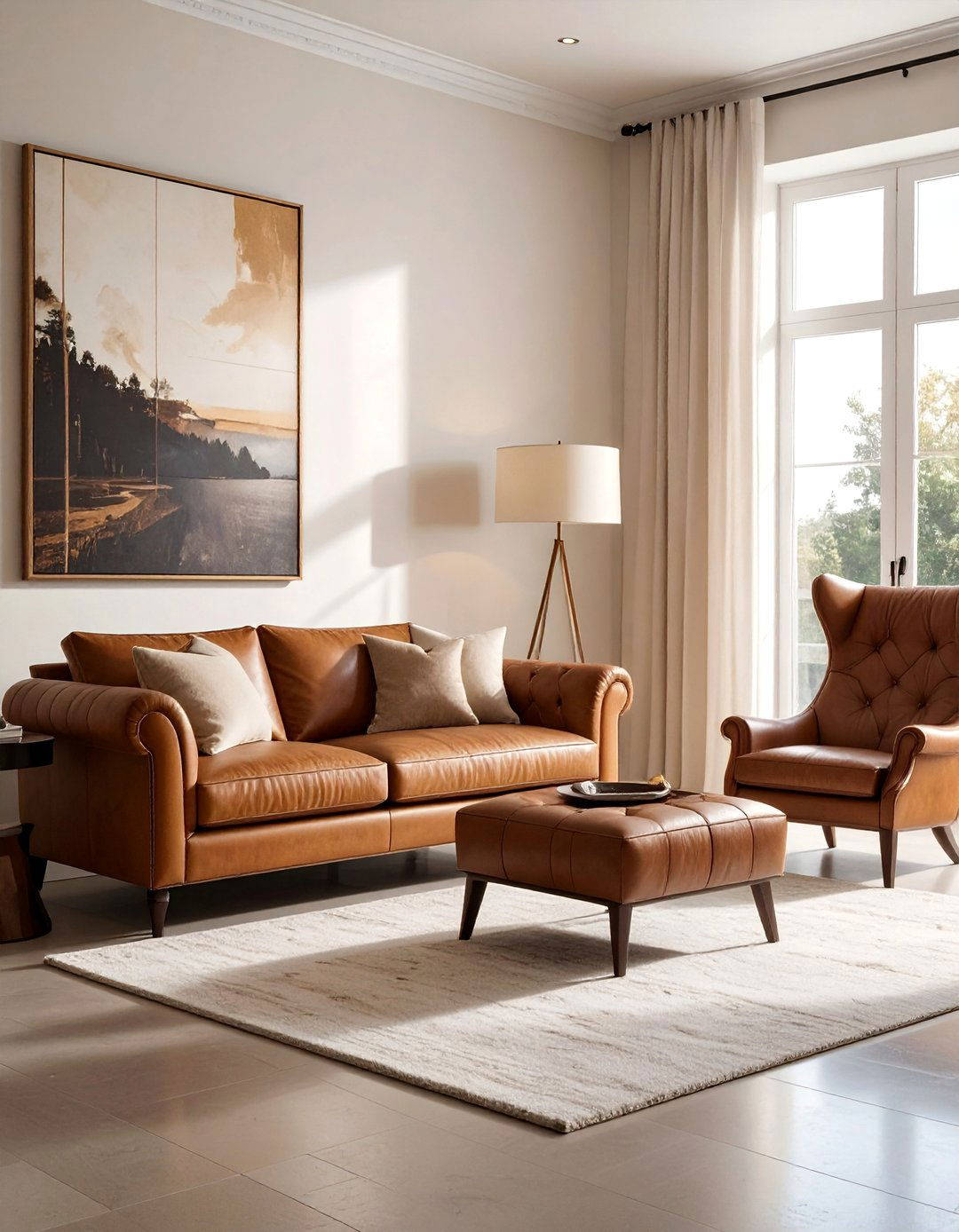
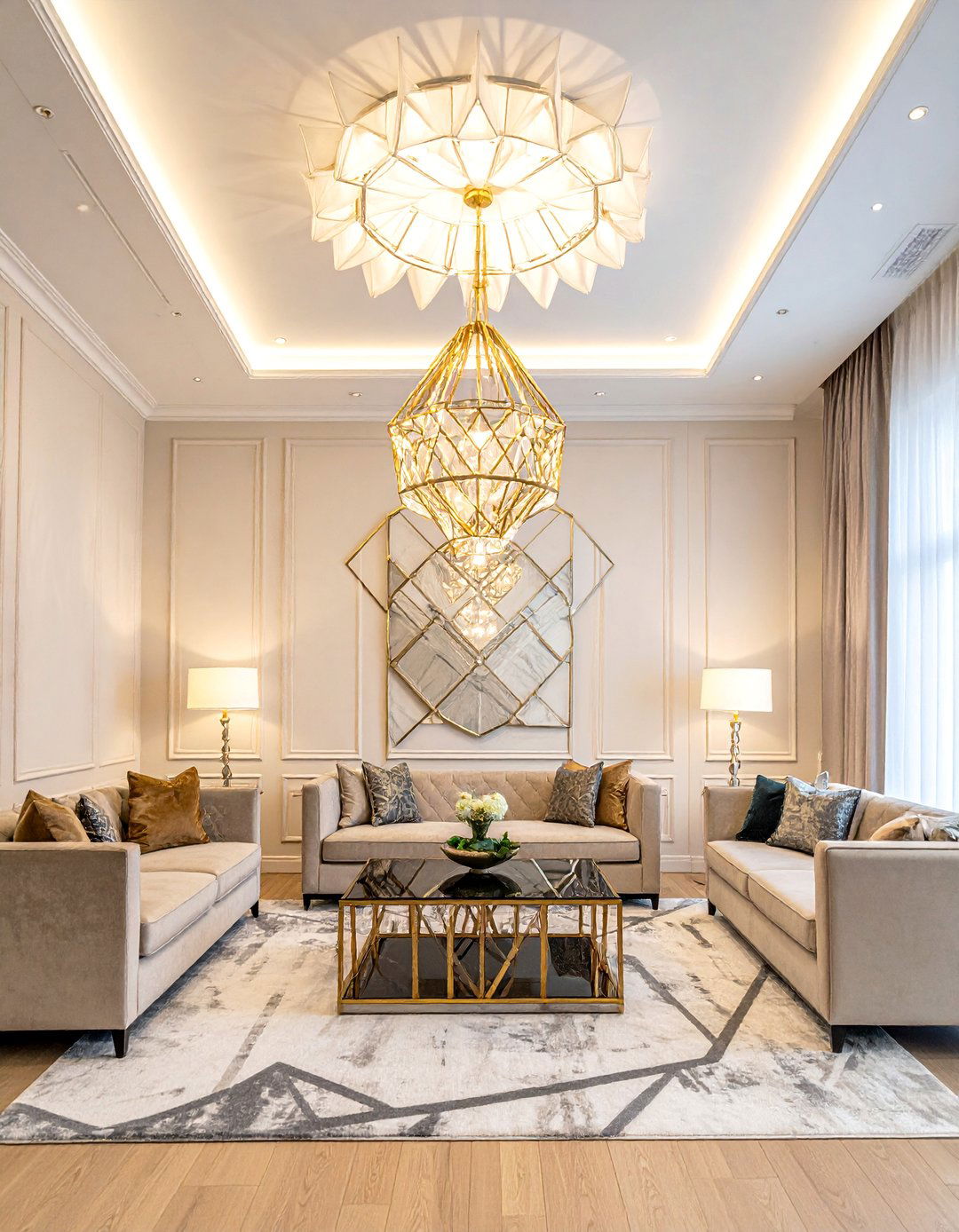
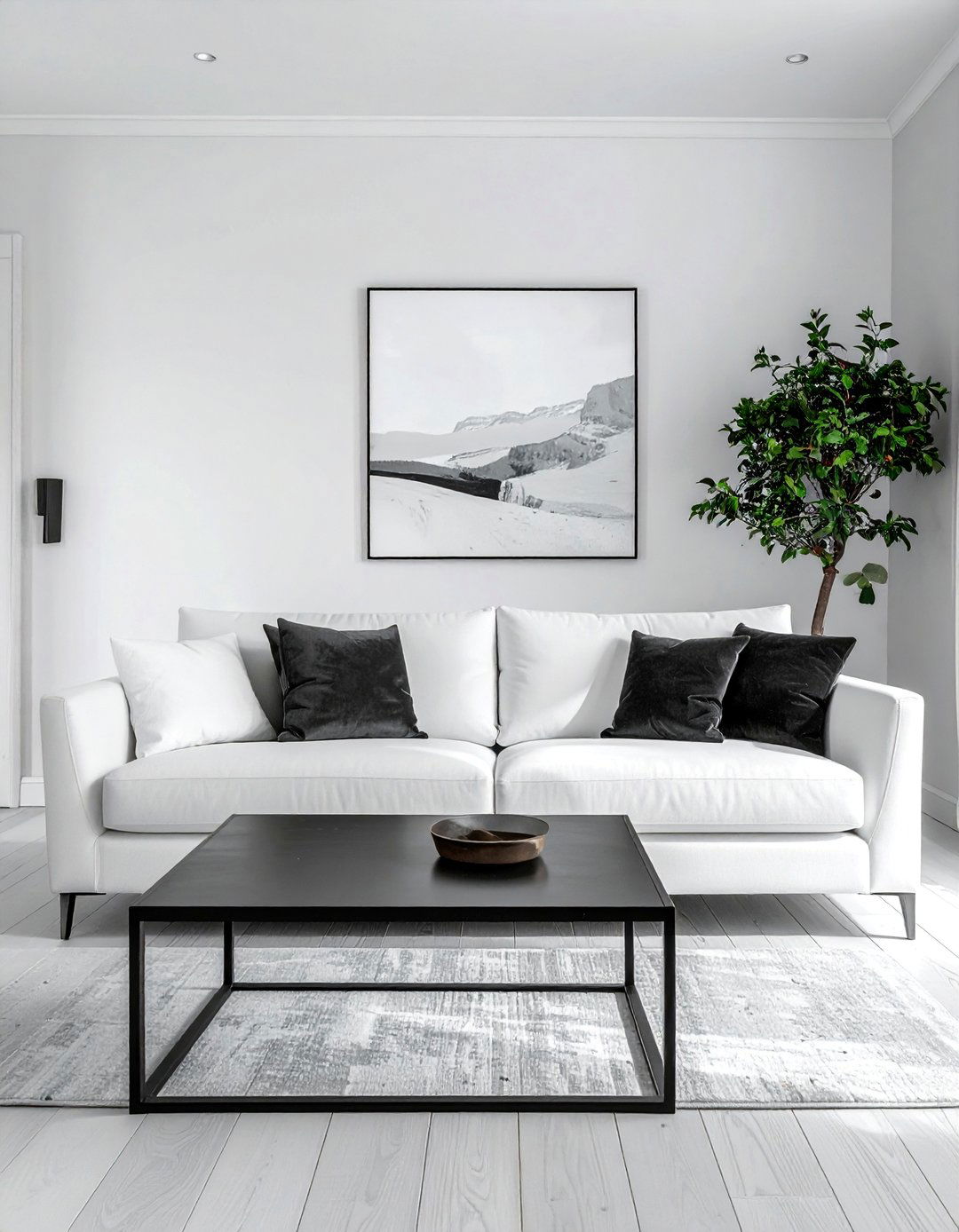
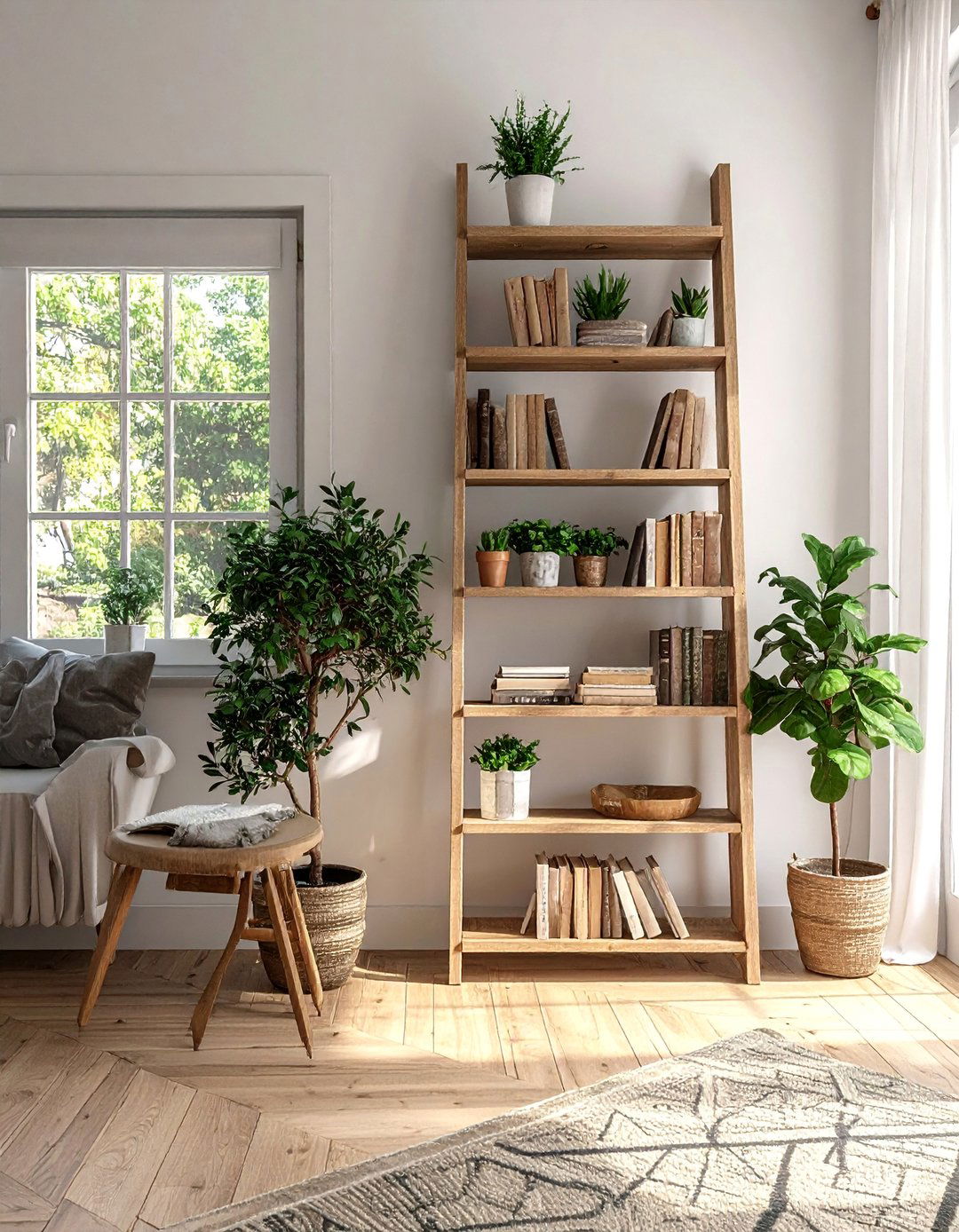
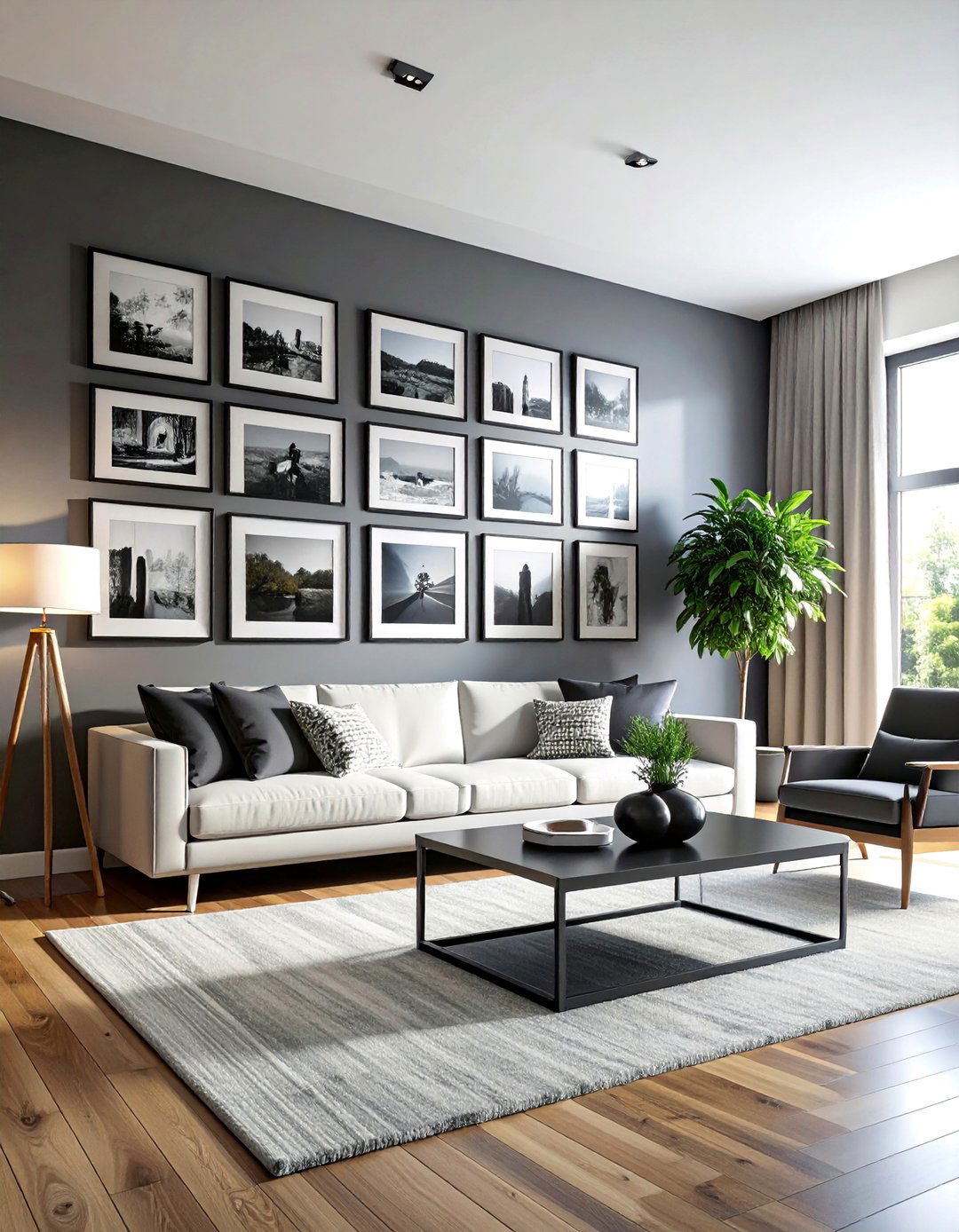
Leave a Reply